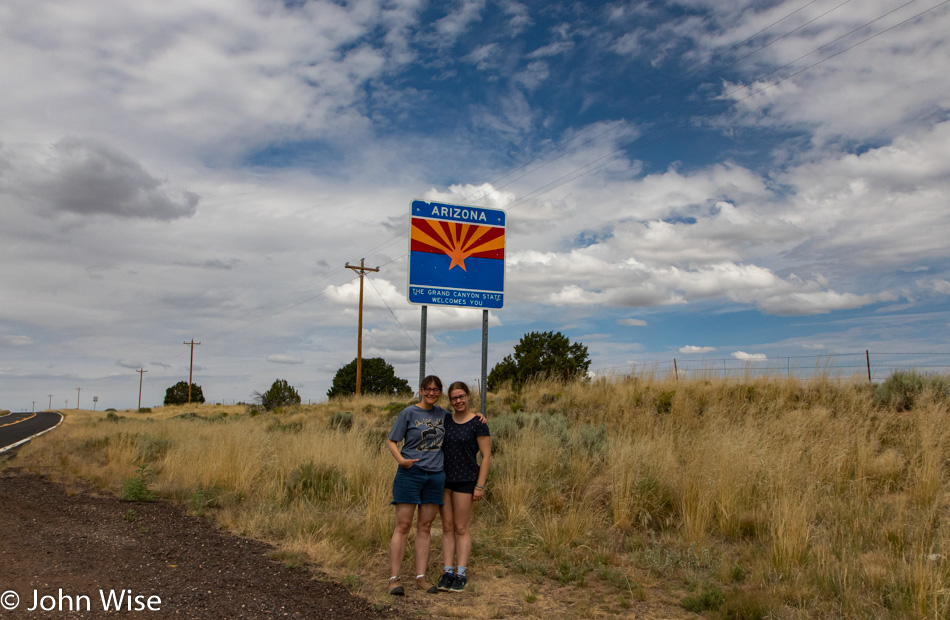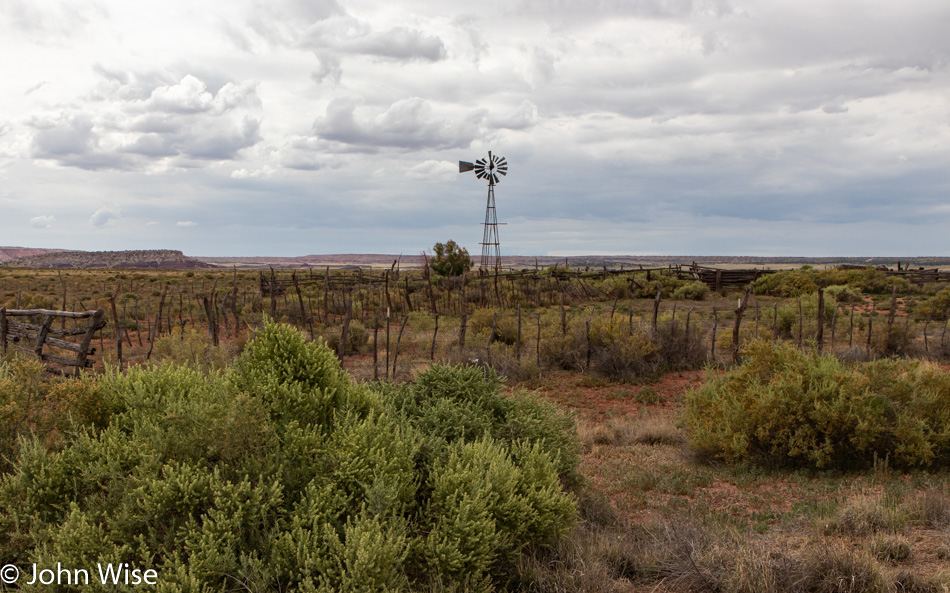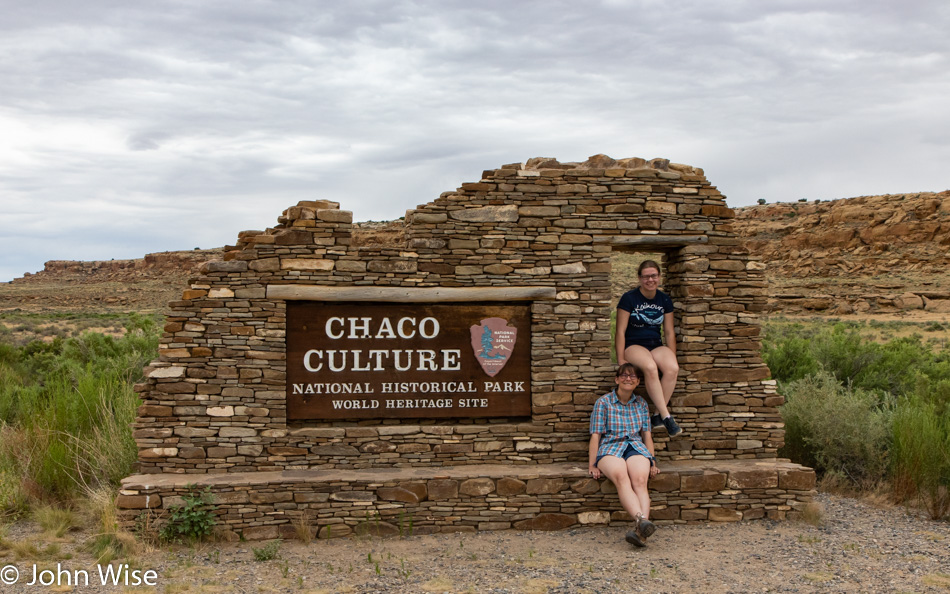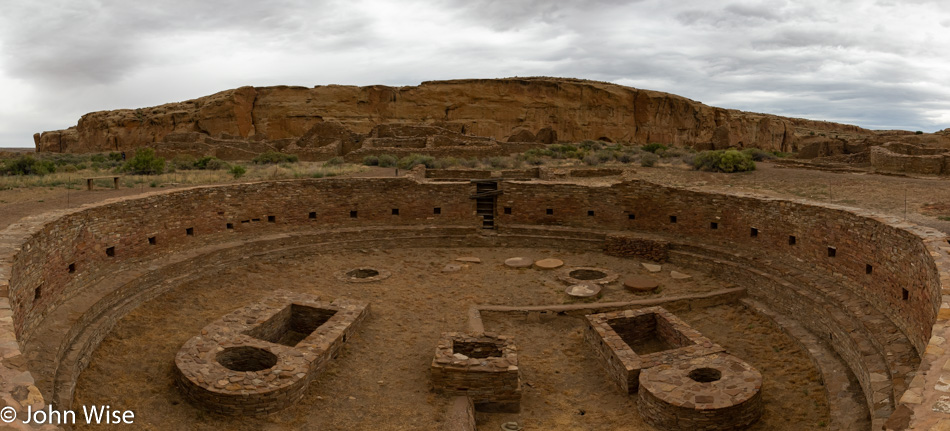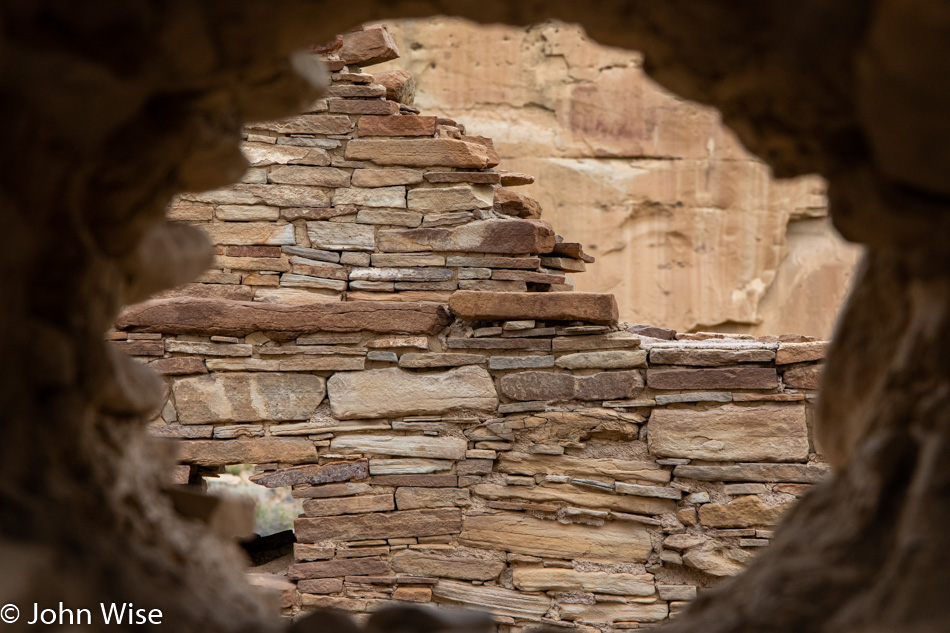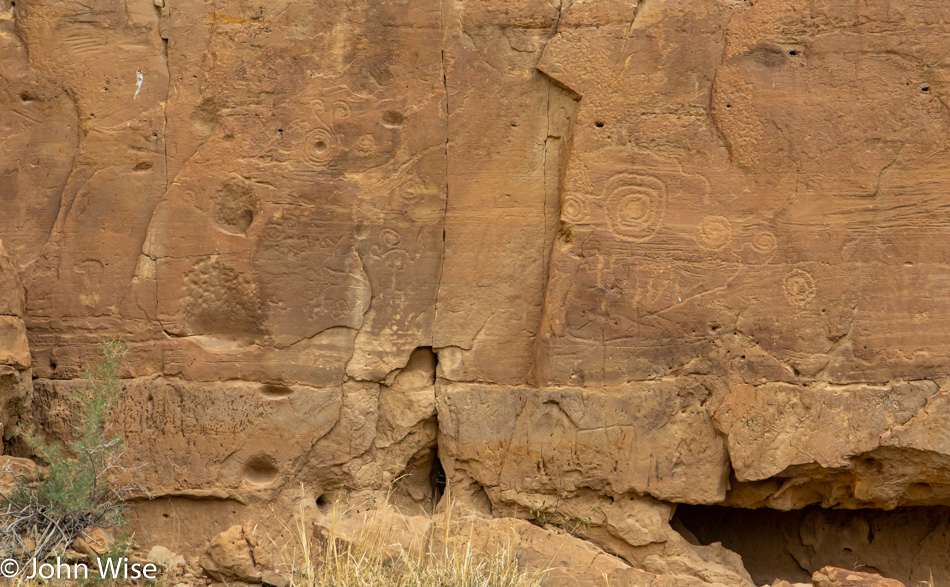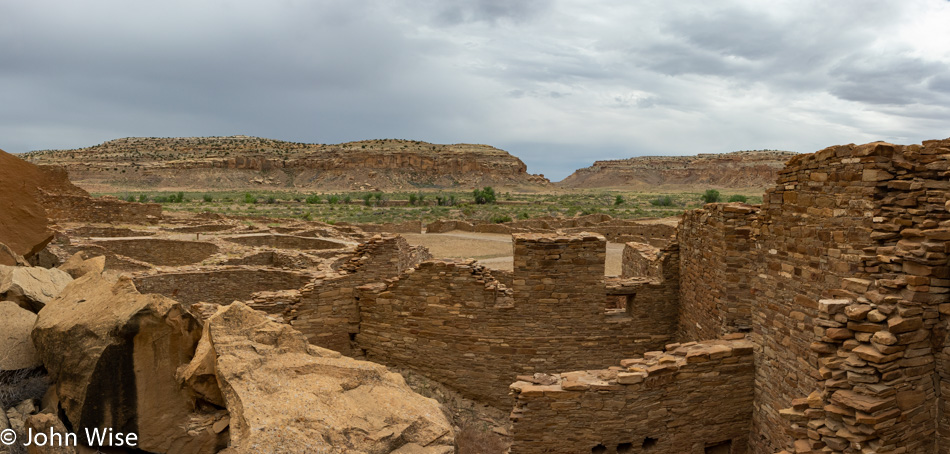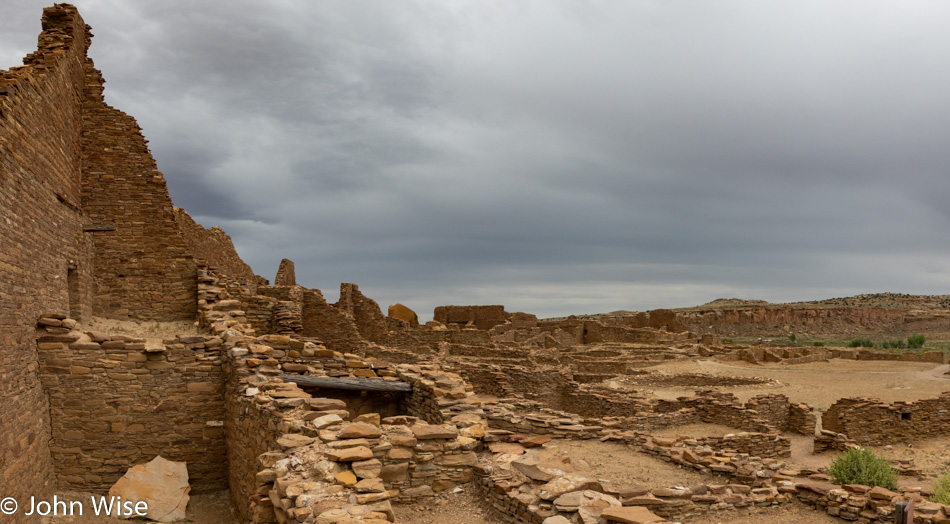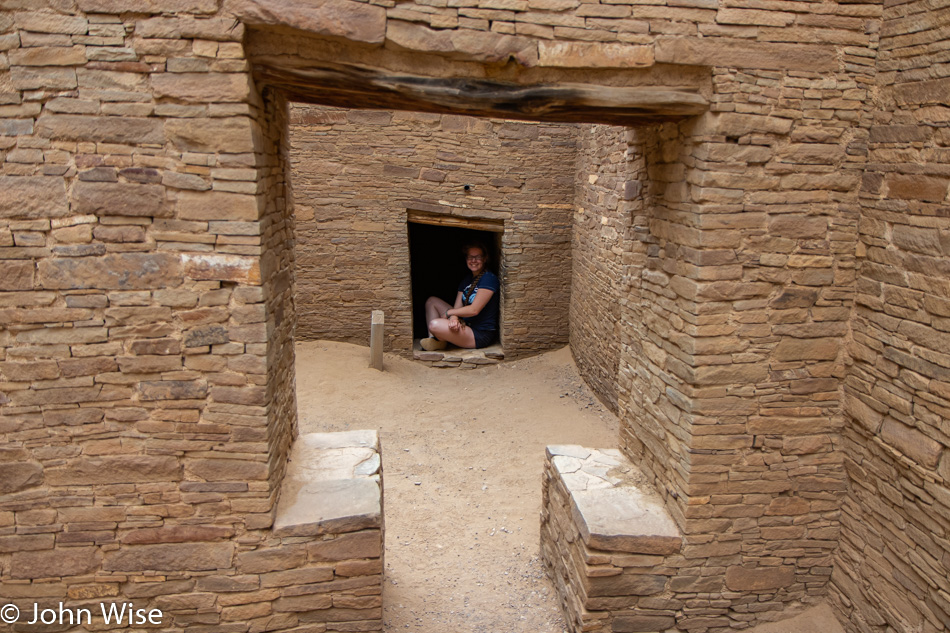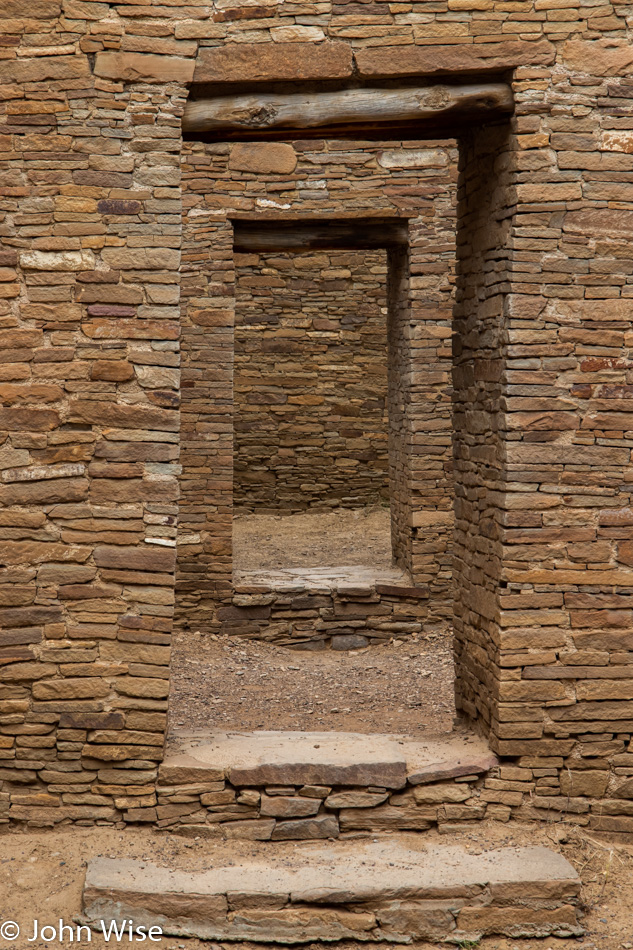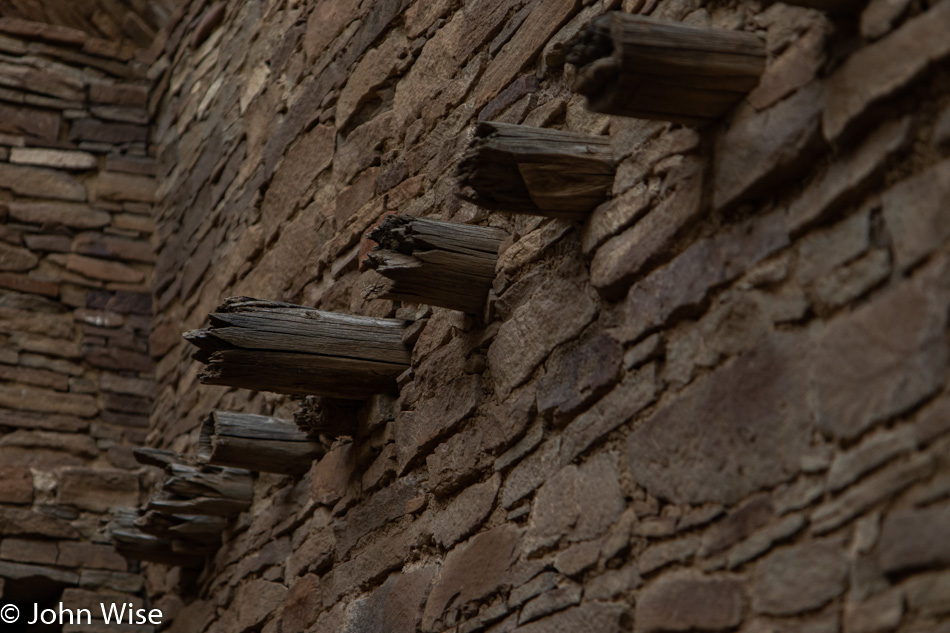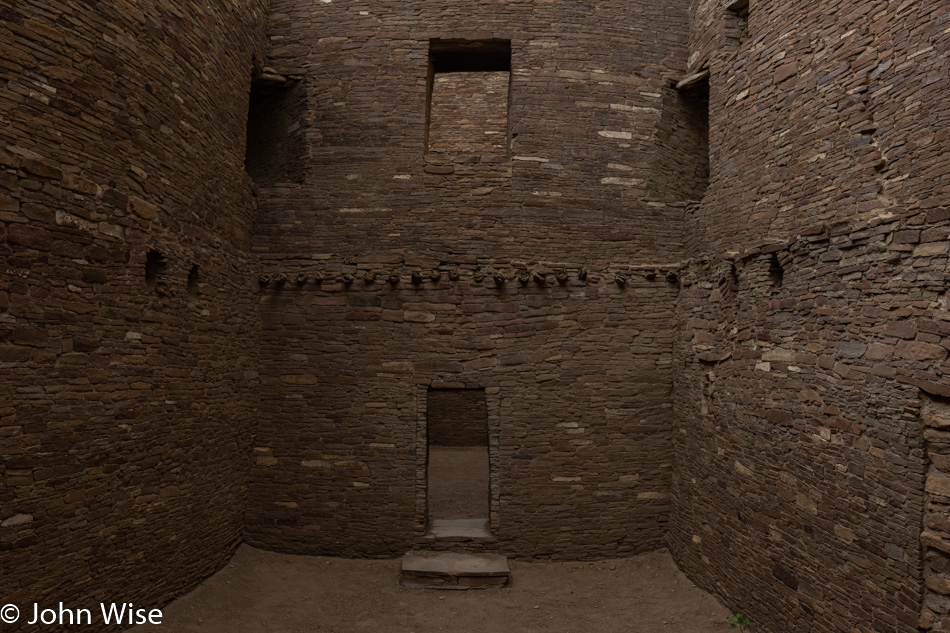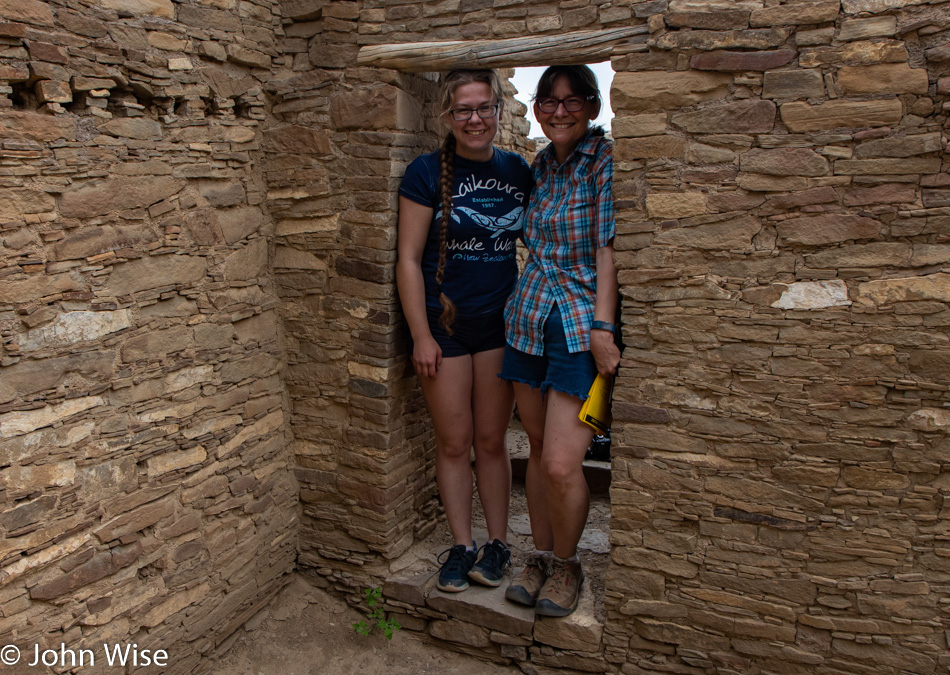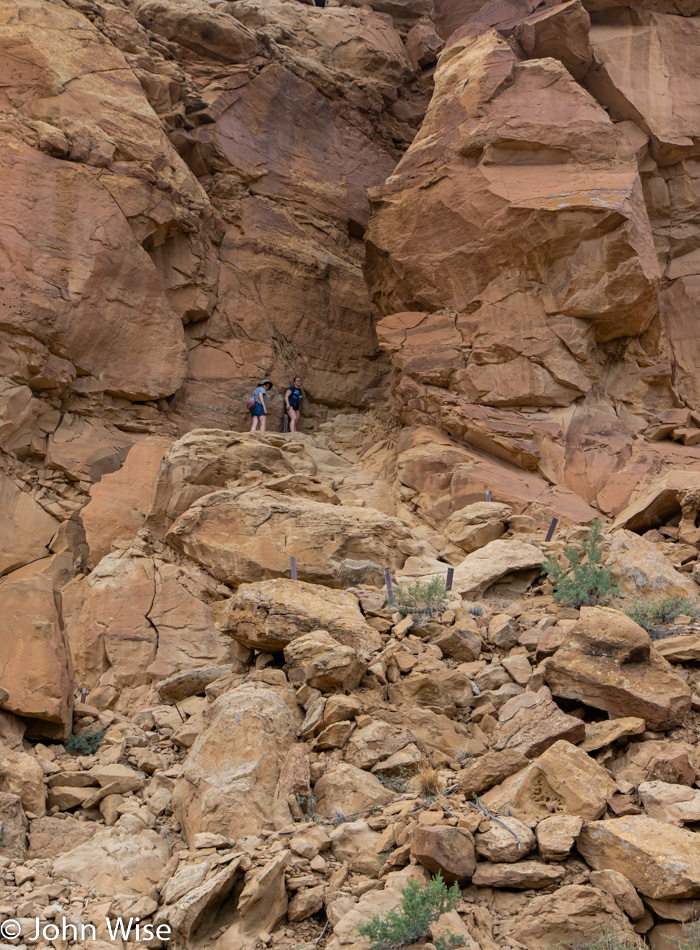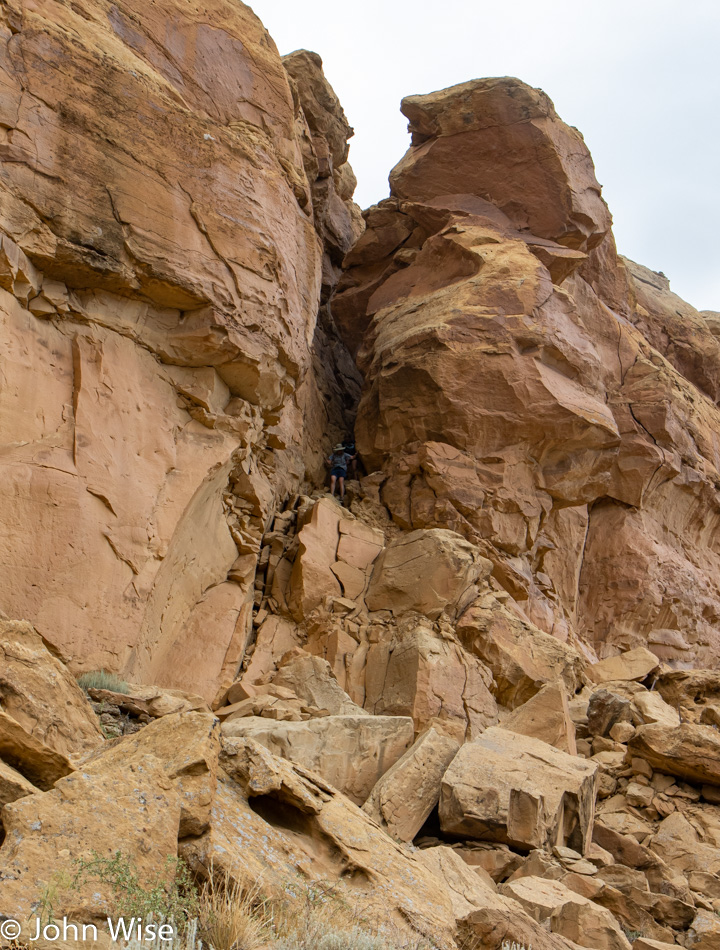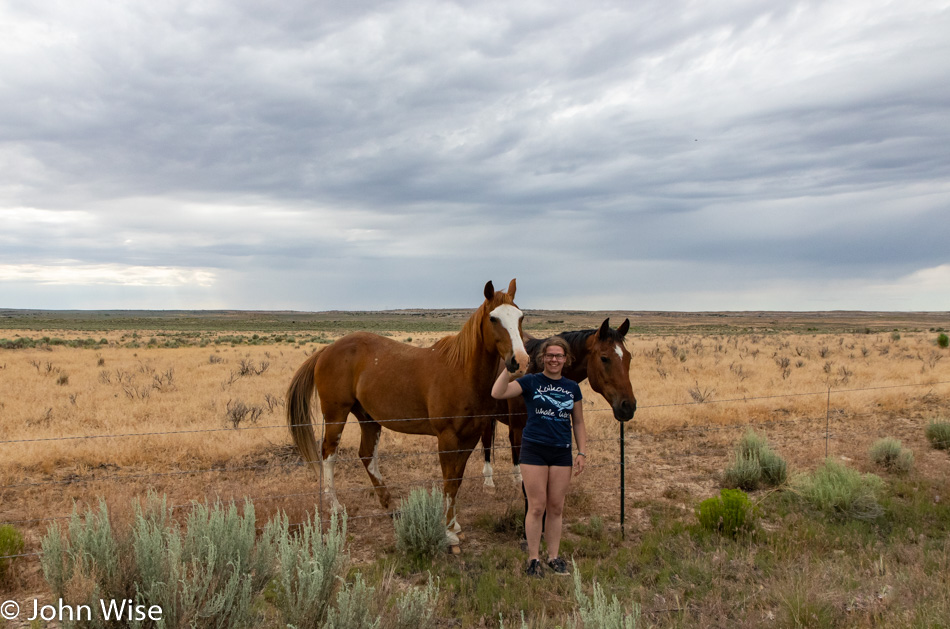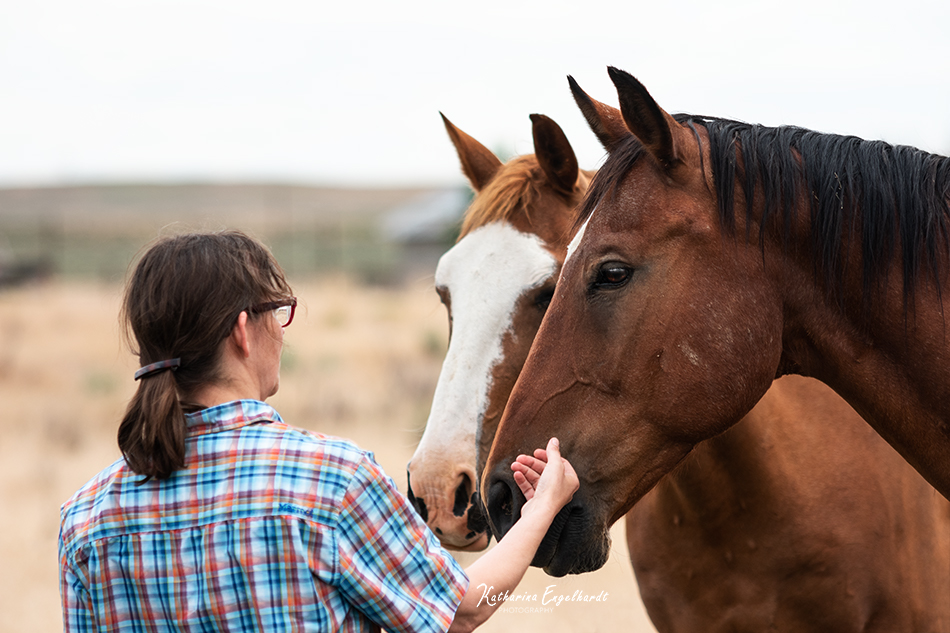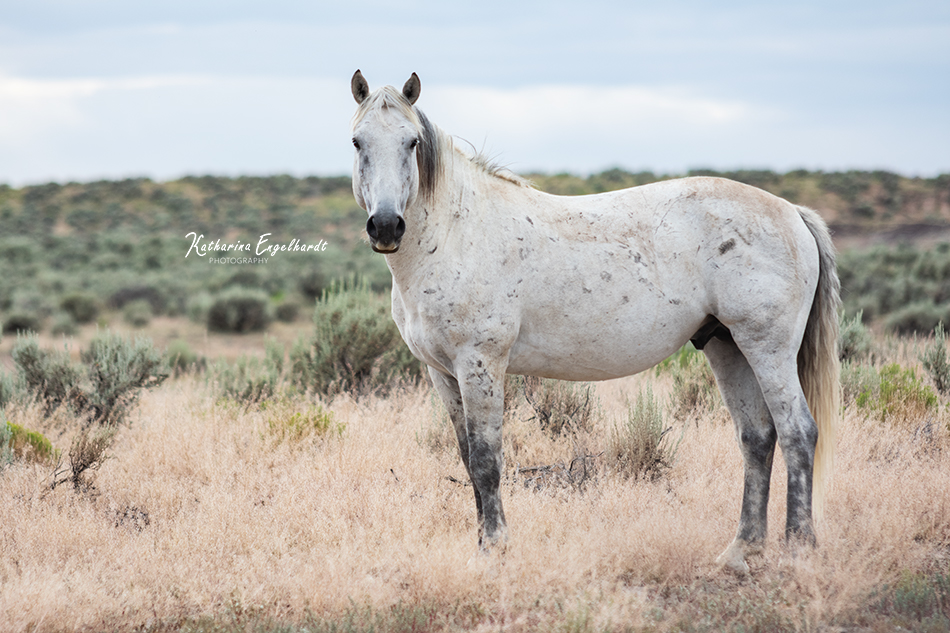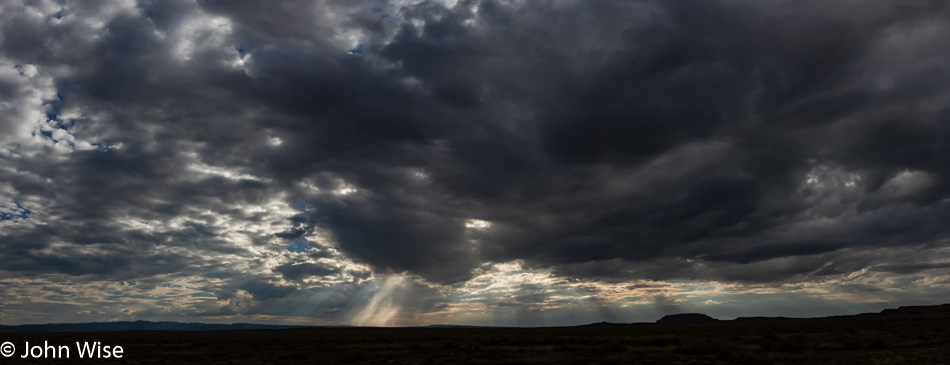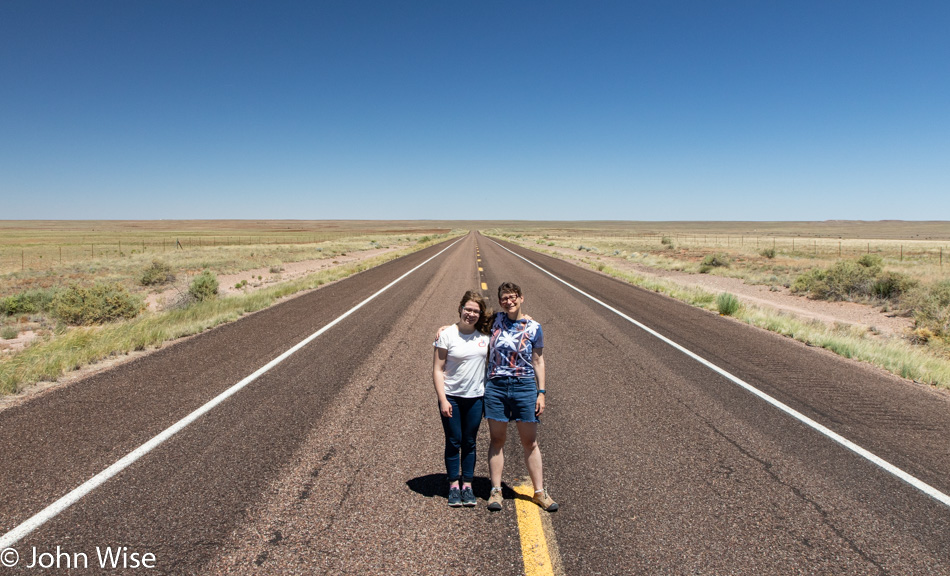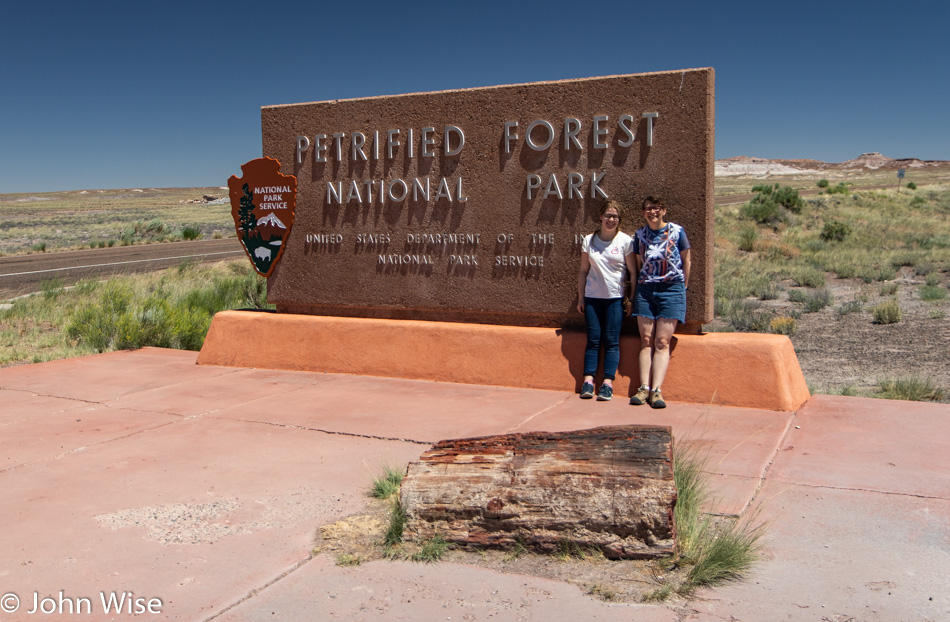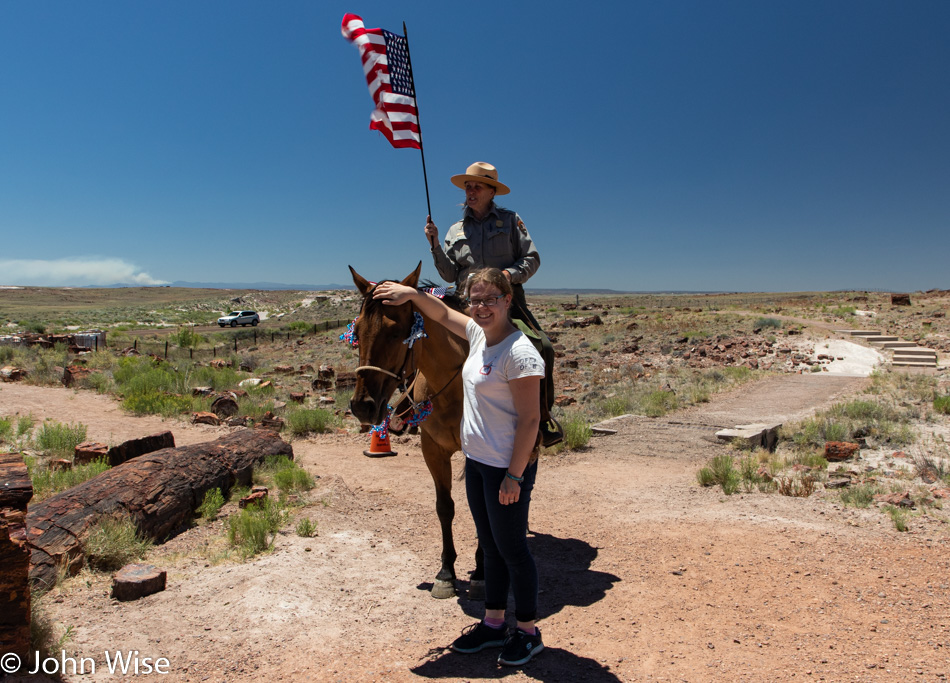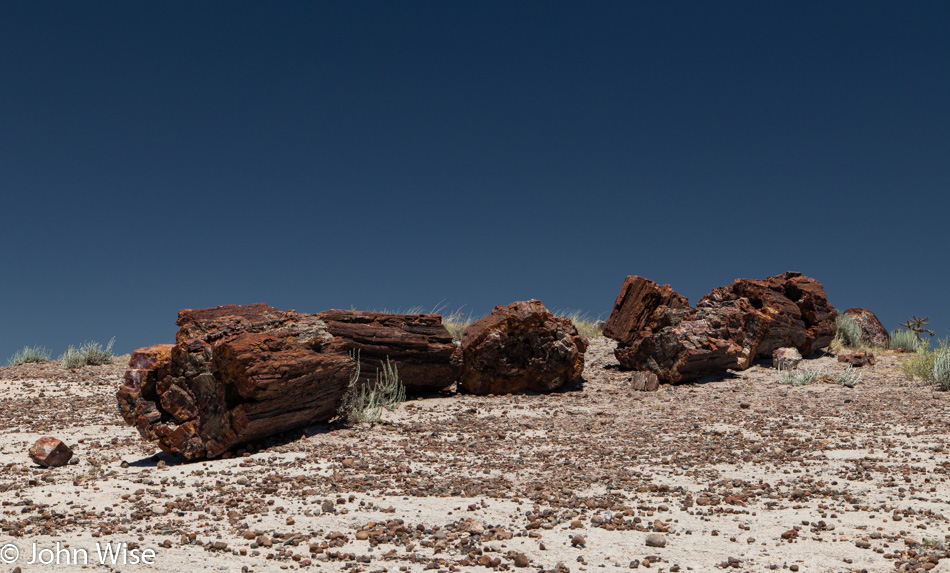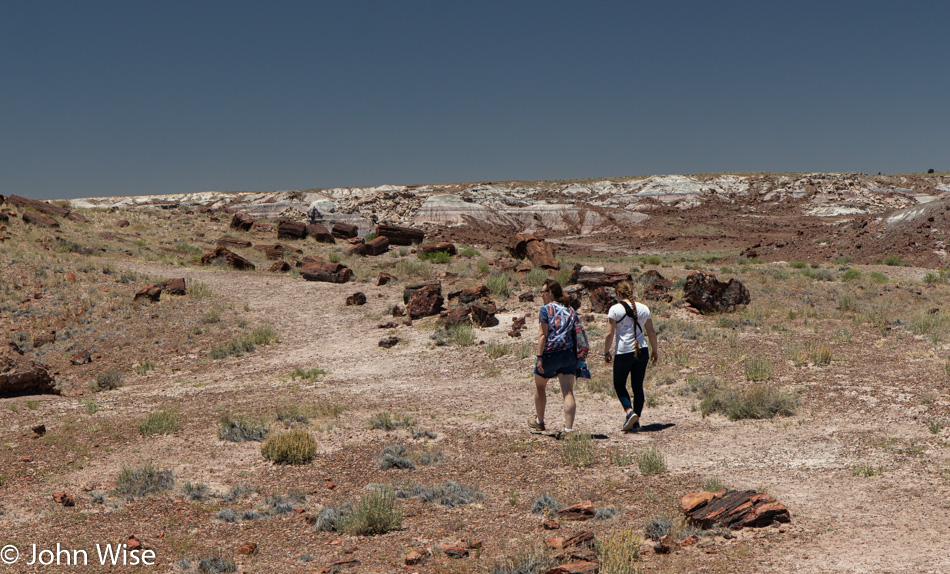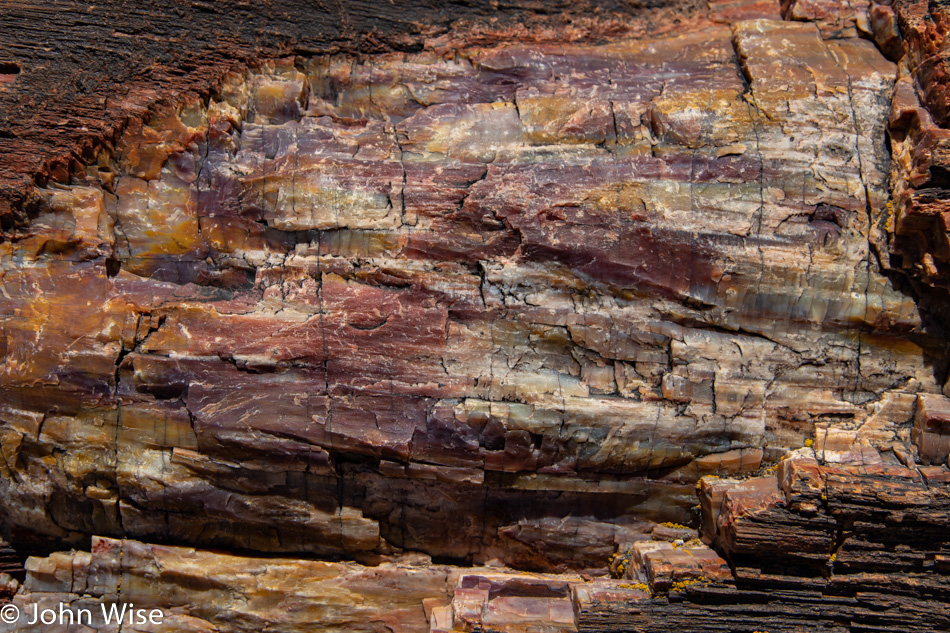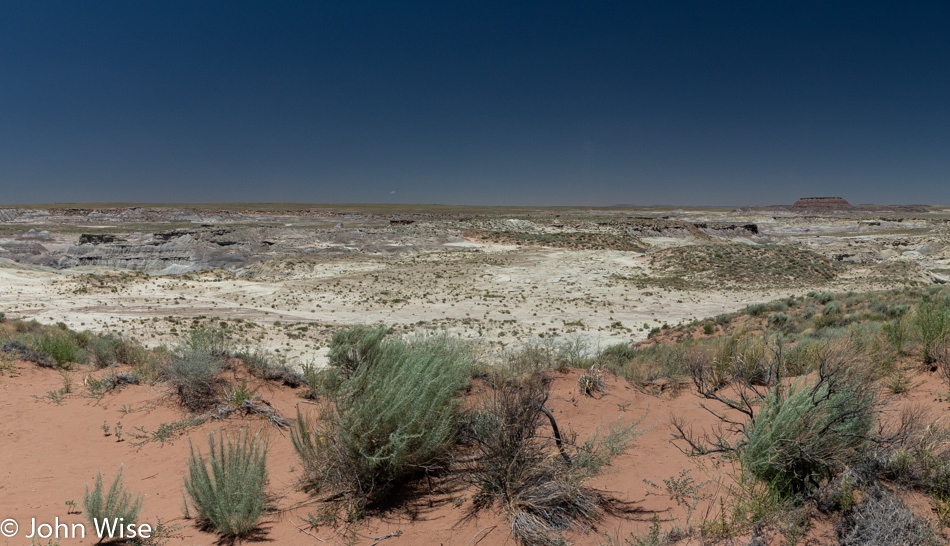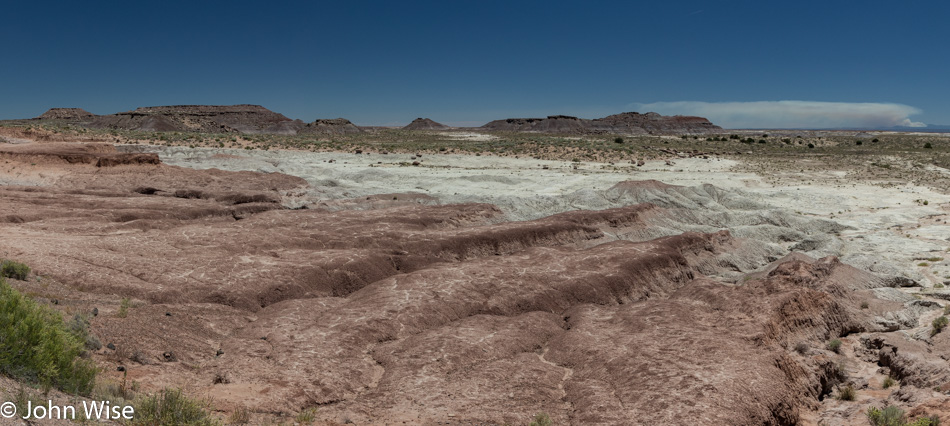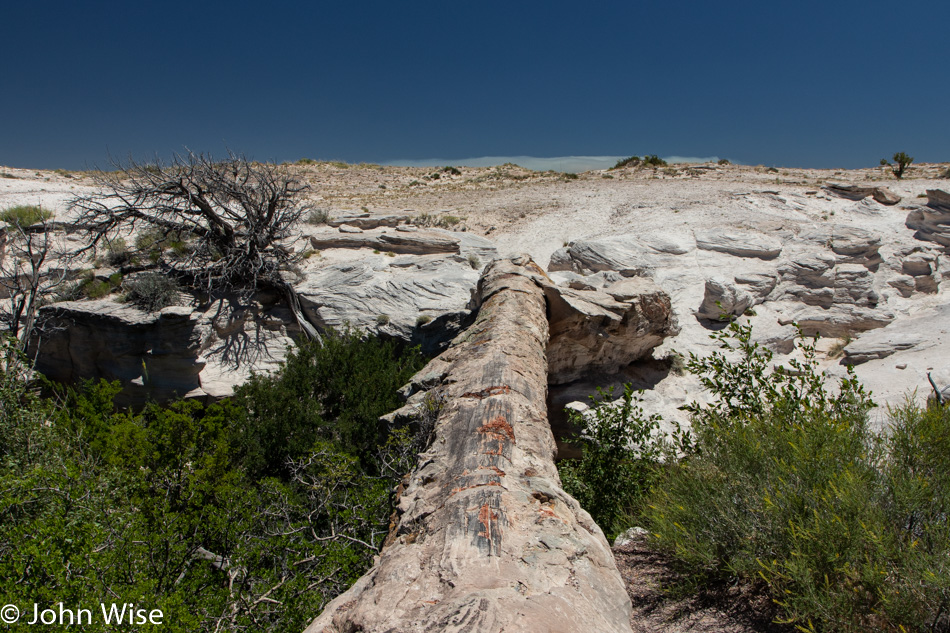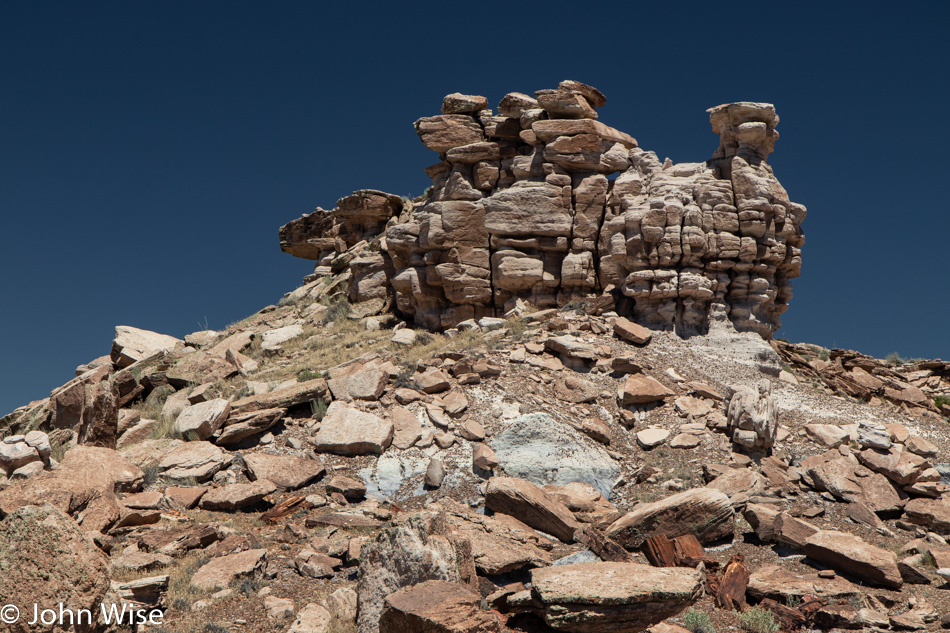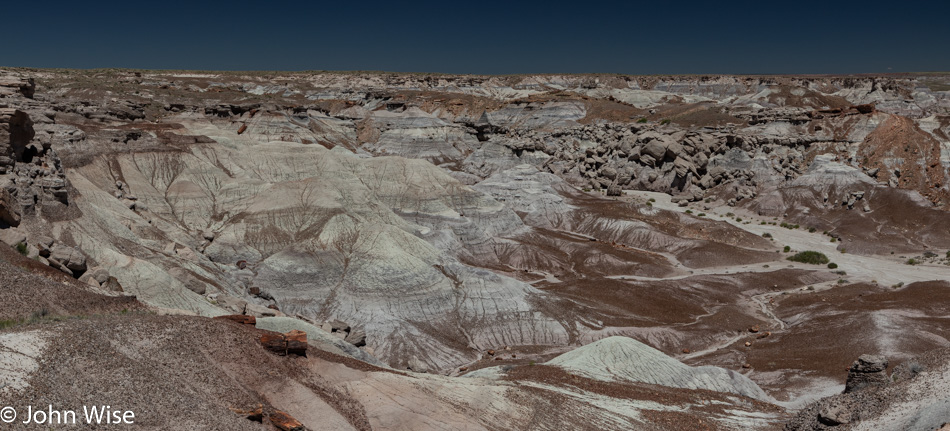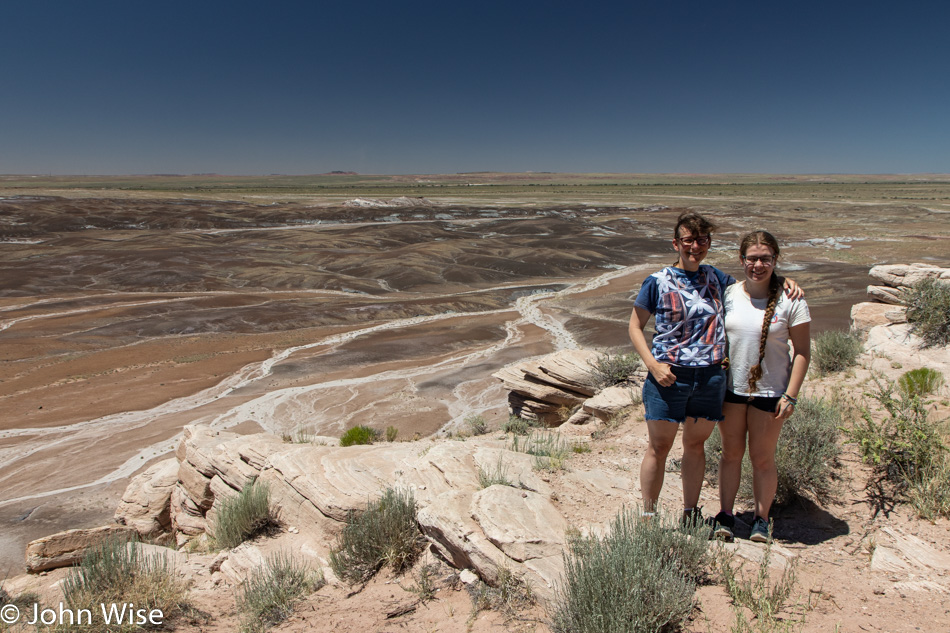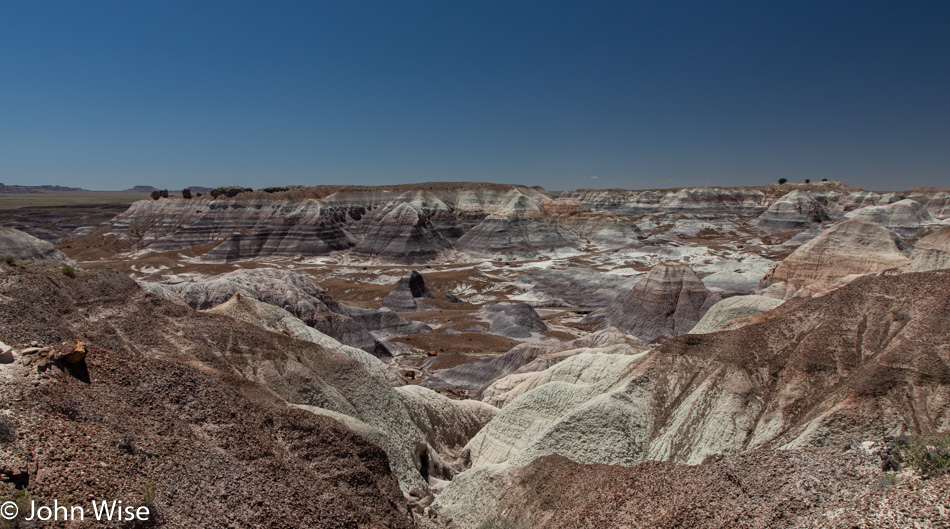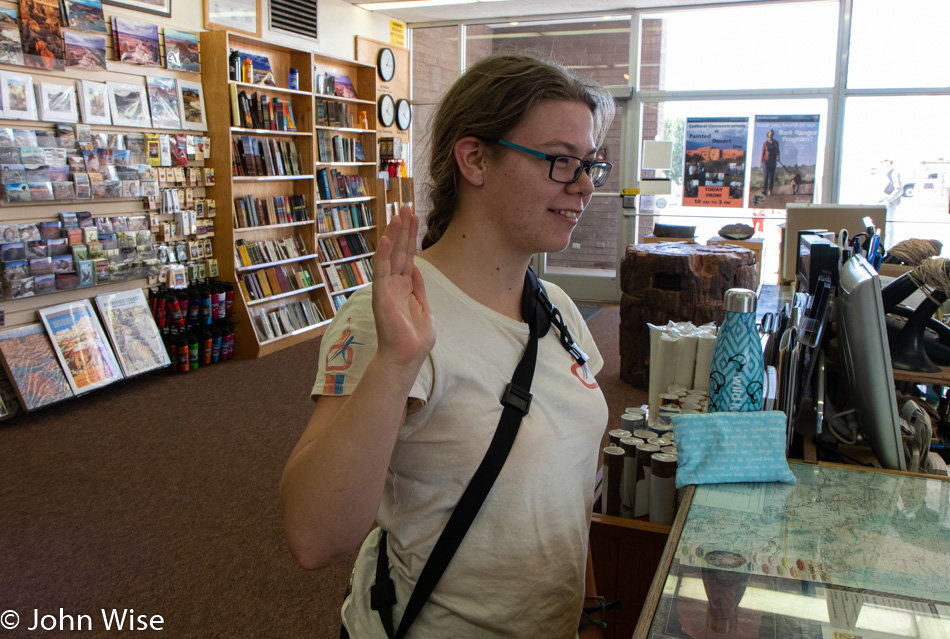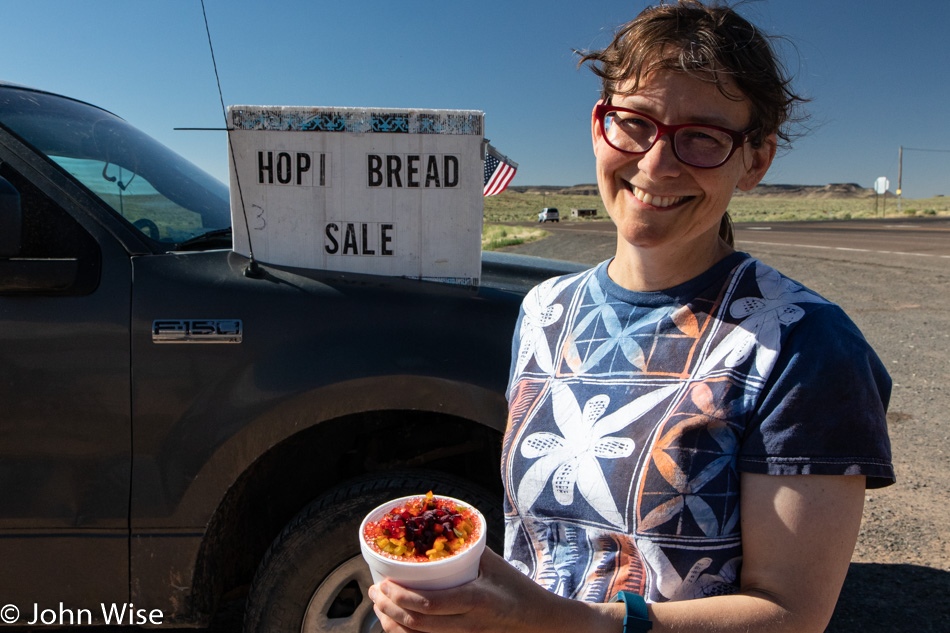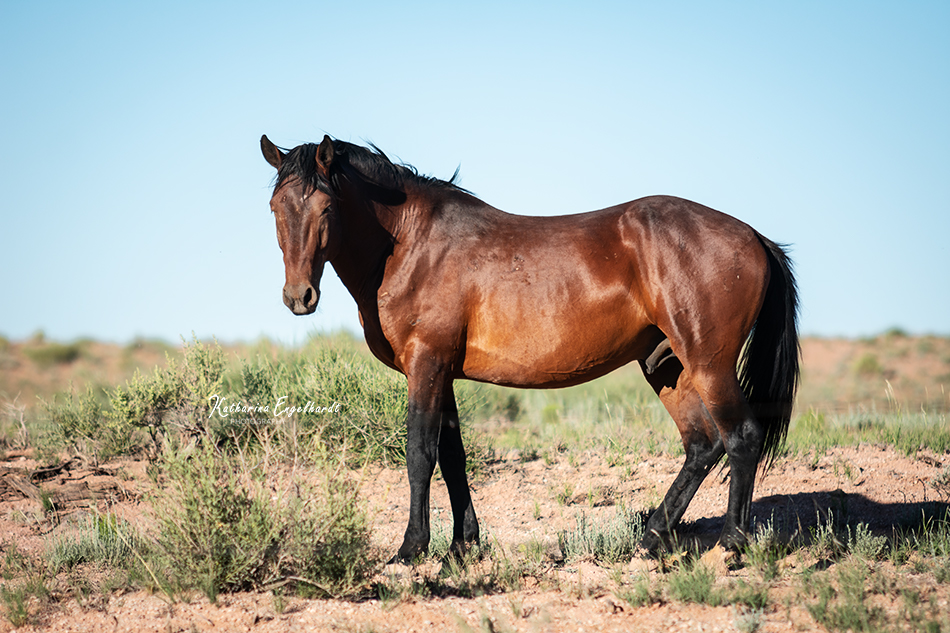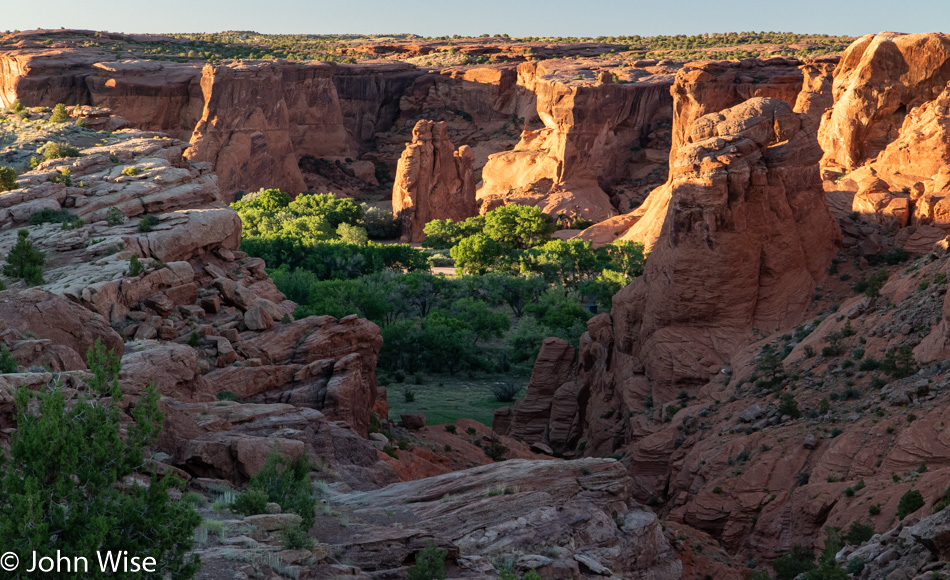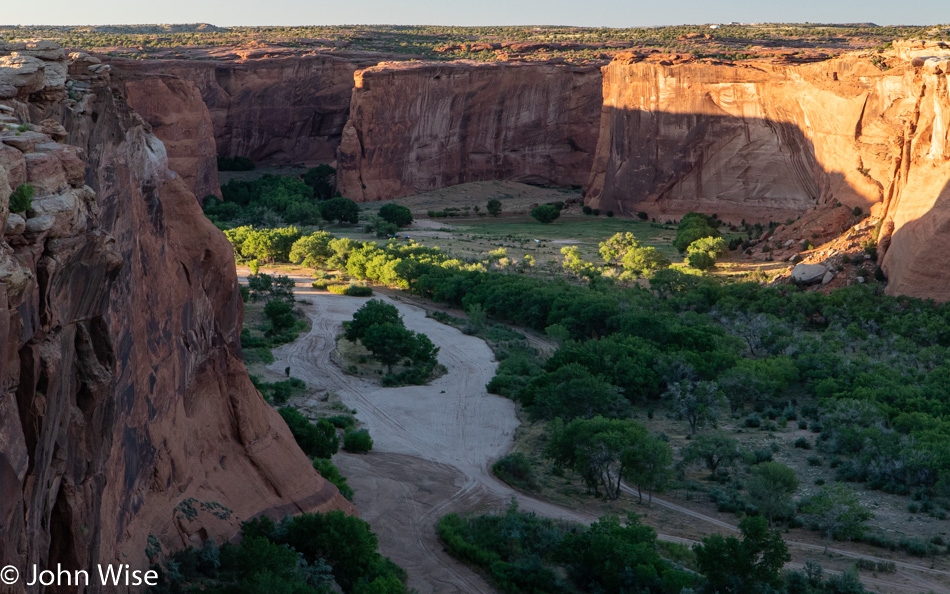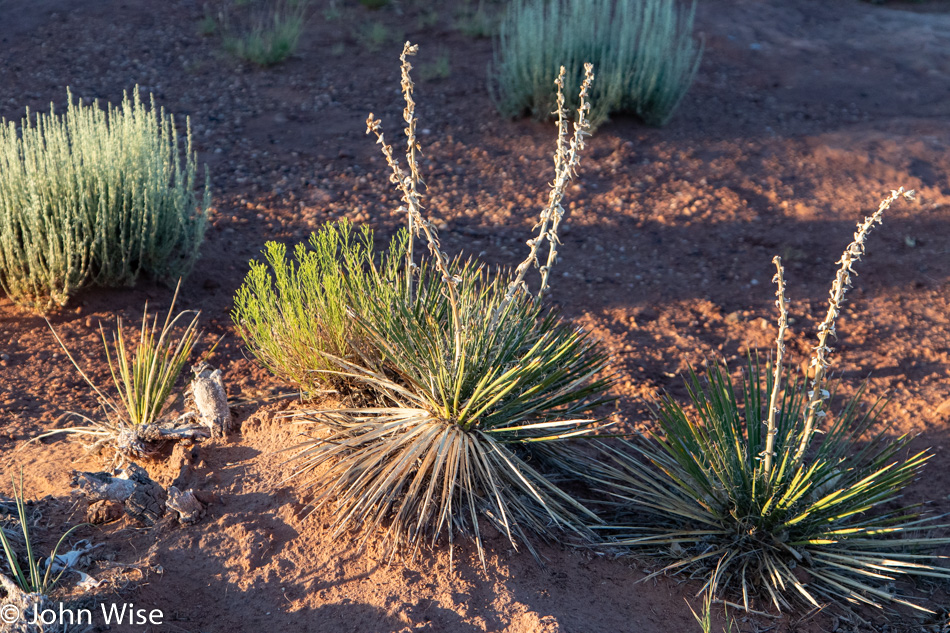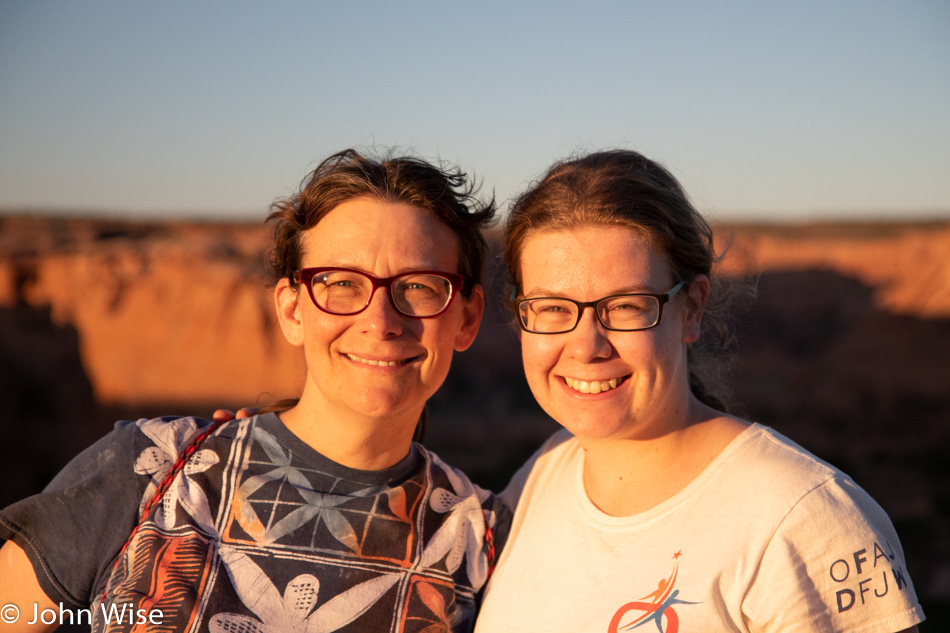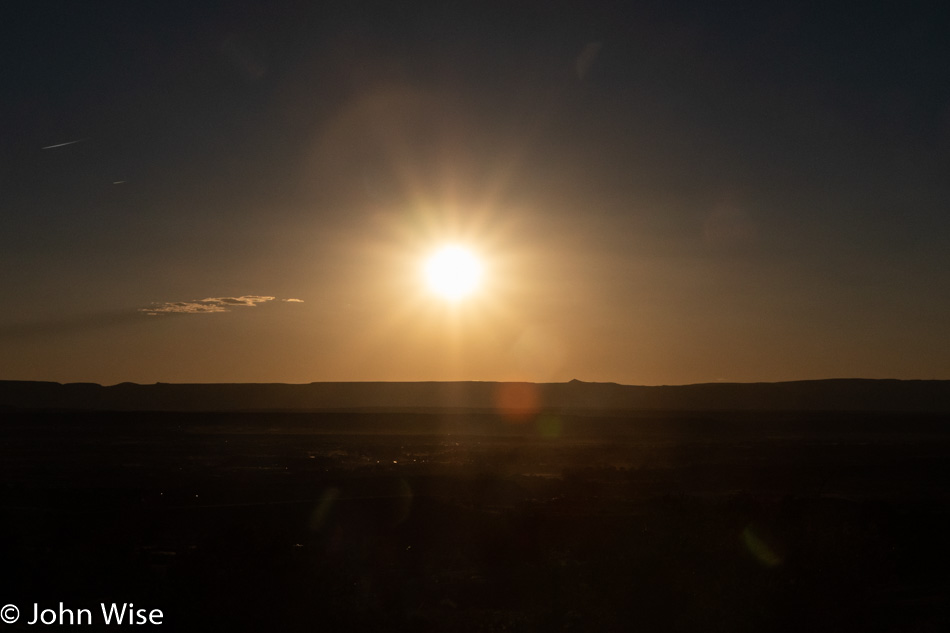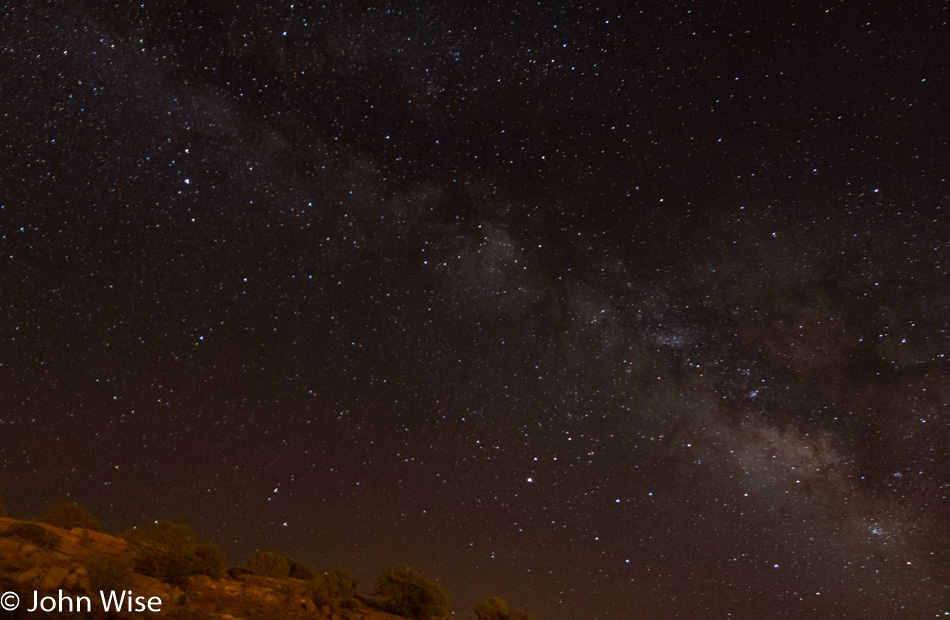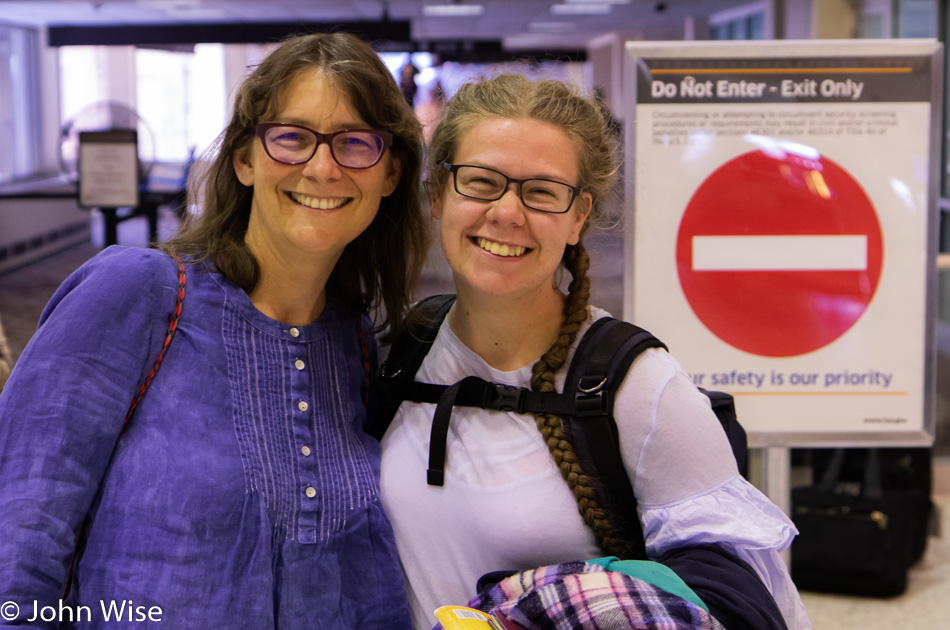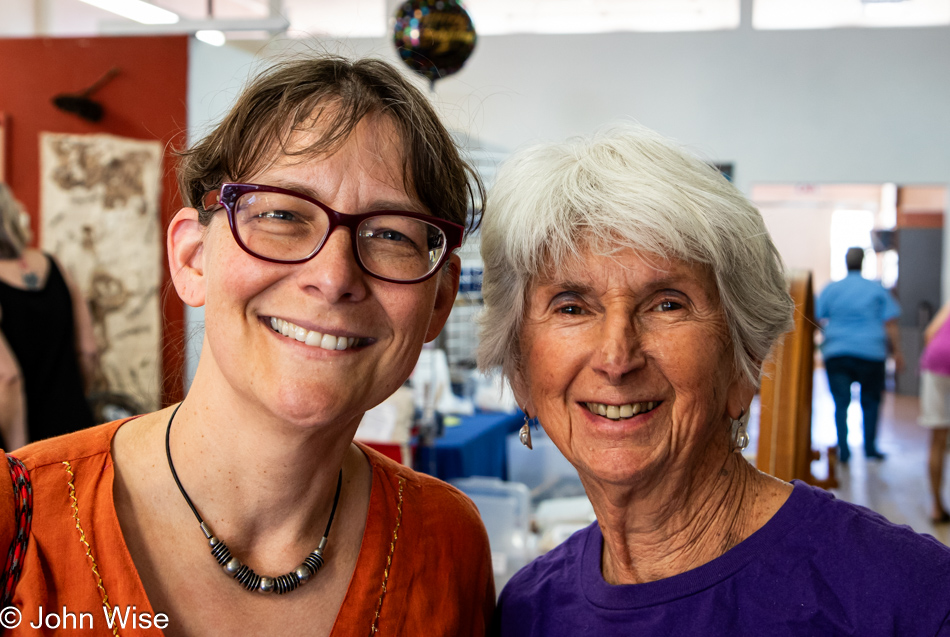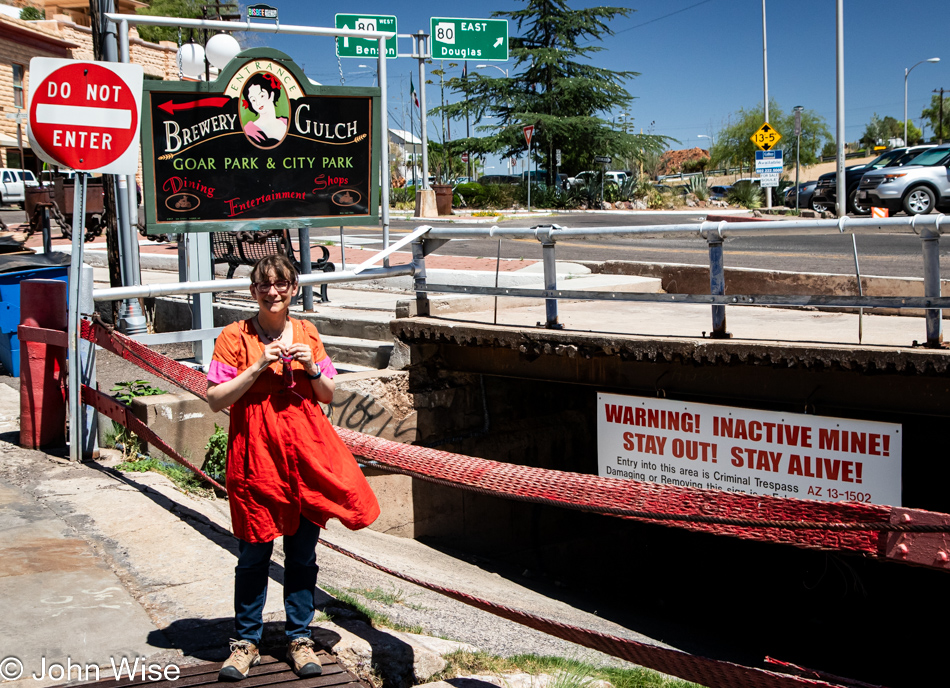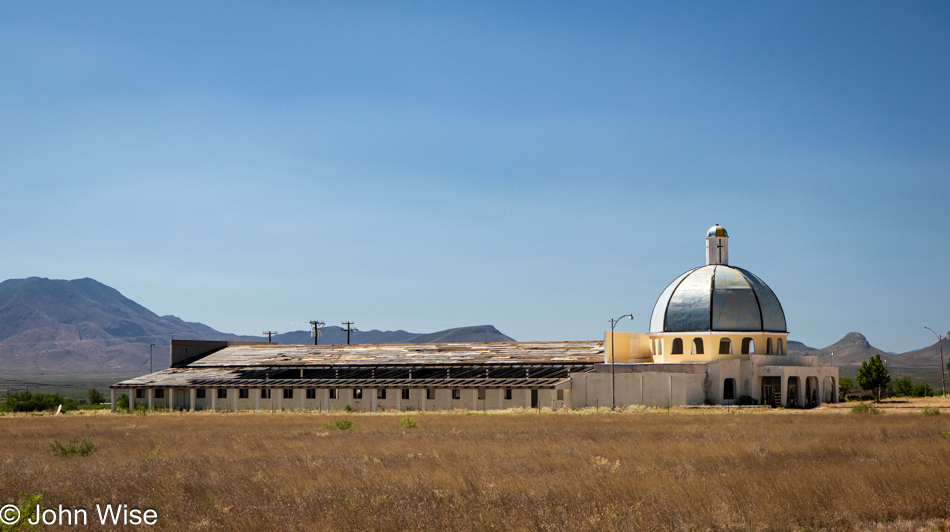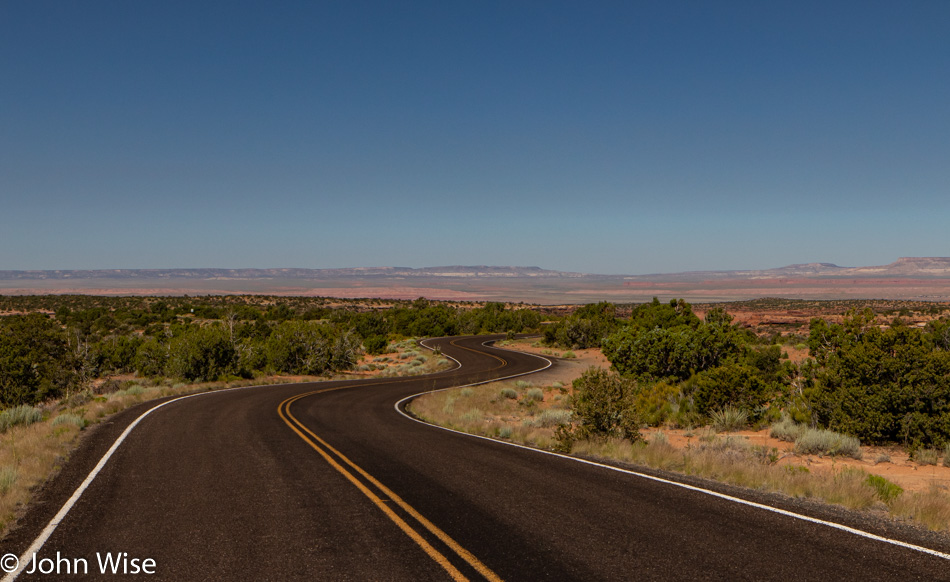
We are back up on the plateau above Canyon de Chelly, but this time, we’re on the north side as we head in the direction of Tsaile.
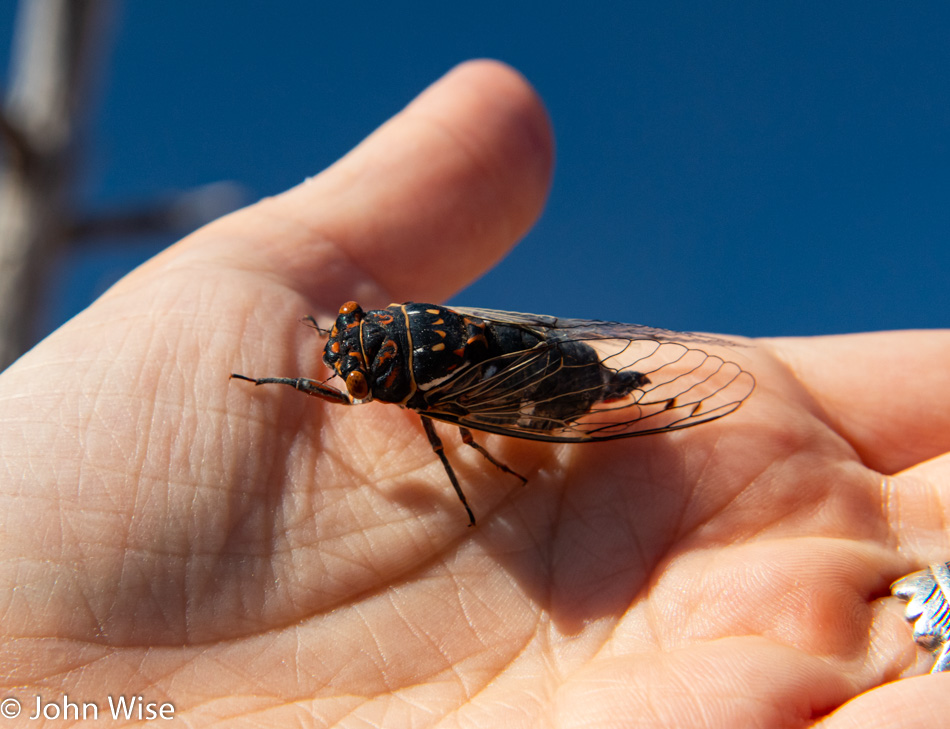
On our way to the Antelope House Overlook, Caroline hears cicadas and spots two of them on some barren branches. We are almost never able to find them up in the trees because when we approach, they shut up. Today, though, was different as Caroline went right up to one, put out her hand, and while still buzzing, one of the cicadas crawled out onto her hand. One of the first things she remarked about this insect’s markings is how they resemble patterns used in Navajo rugs.
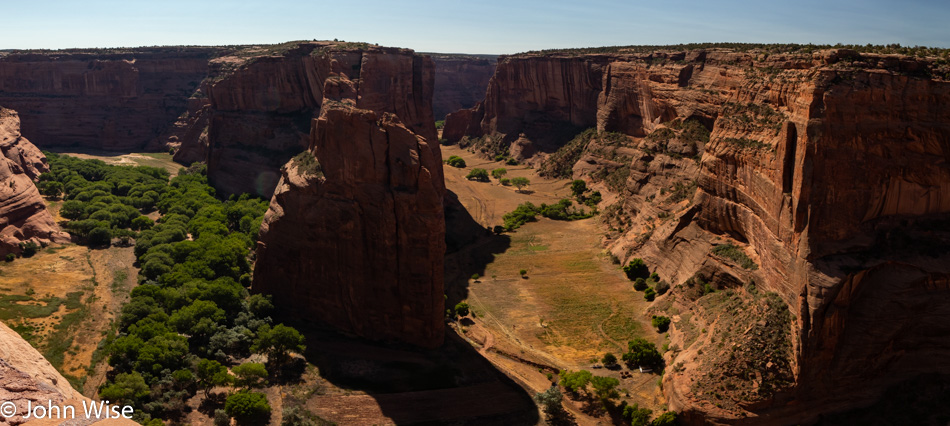
No time for a jeep tour of the canyon today as we have a lot of driving to do. By the end of the day, we’ll have driven the equivalent of the trek from London, England, to Prague, Czechia, during the past two days. This is a concern because our guest is prone to motion sickness. To combat this, we have her in the front seat, and so far, she seems to be doing okay; still, the long drive is obviously taxing her constitution. I’m sure our form of travel abuse will break her in.
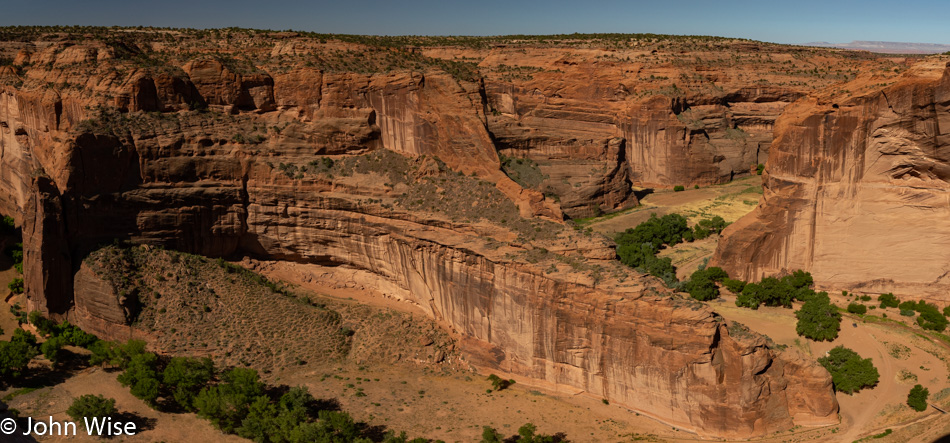
The Antelope House is down towards the bottom right of the photo, but it’s still in shadow, so it’s cropped out. Oh well, the canyon looks great.
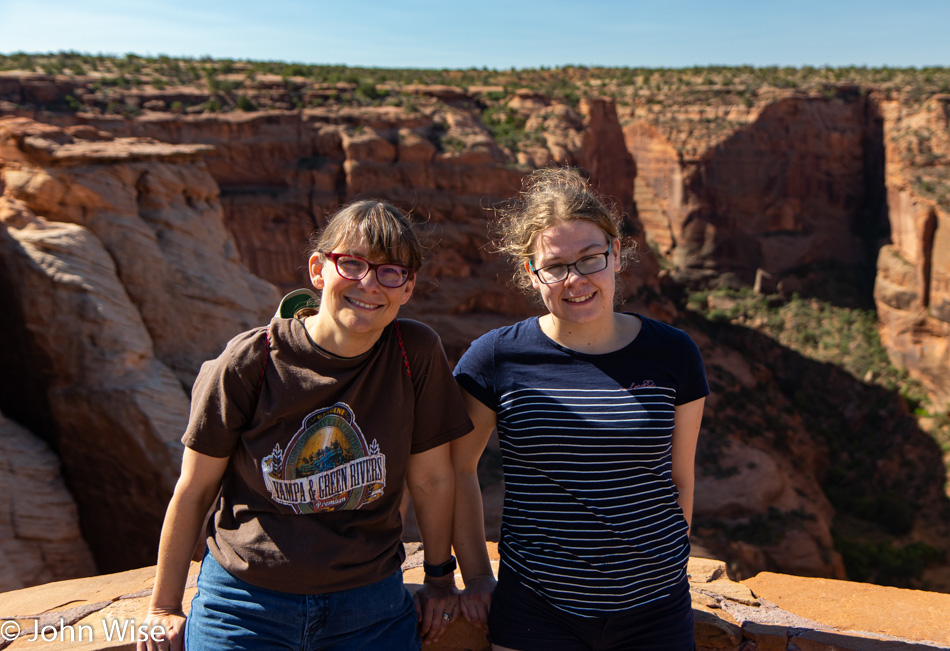
If only you could hear the sounds coming out of the canyon. Cows are mooing loudly behind the ladies, and the echoing walls amplify their deep bellows, changing the typically bucolic sound into one of monsters screaming in anguish from the depths below. After a few minutes of this, it became comical, as though their peculiar sounds were entertaining them too.
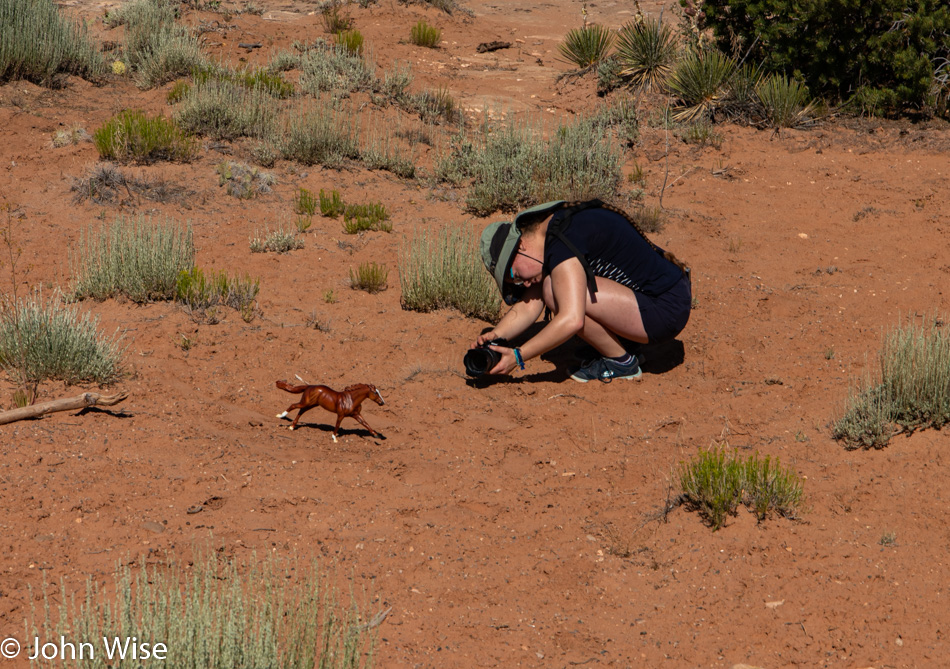
If you can’t find real horses in the wild to photograph, bring your own and fake it.
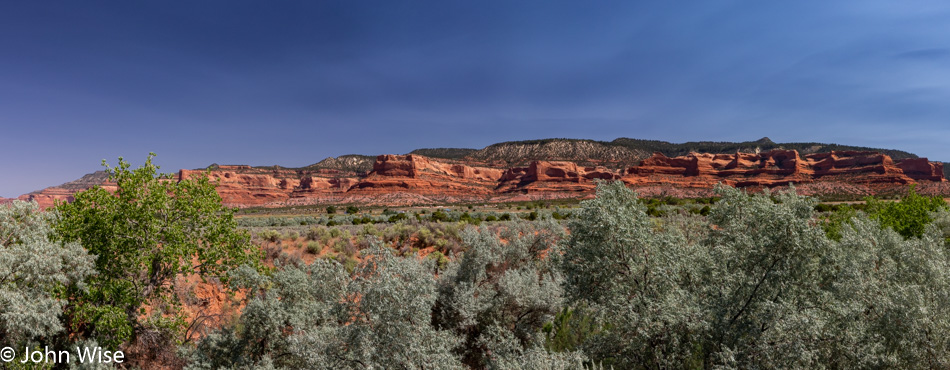
Red sandstone cliffs on our way from Lukachukai to Red Valley.
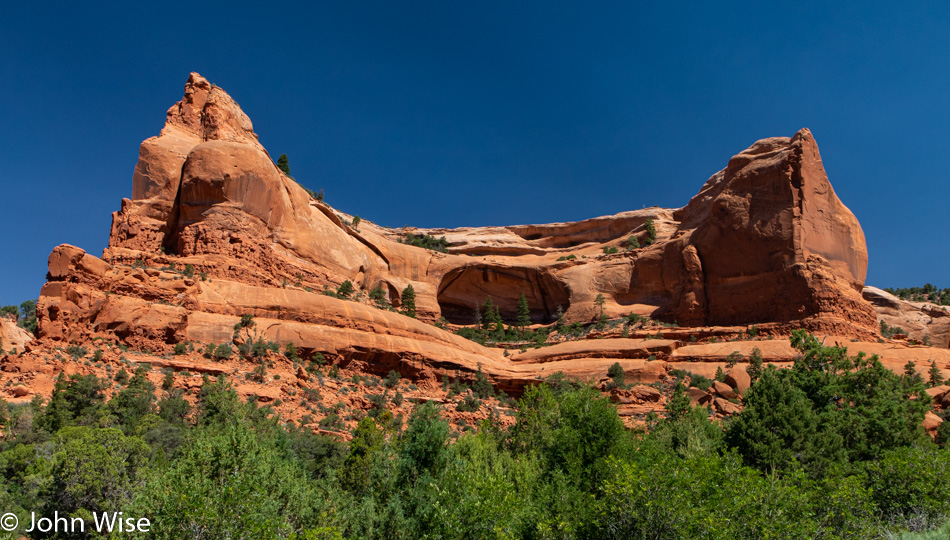
What’s not to love about the extreme contrast between red, green, and blue?
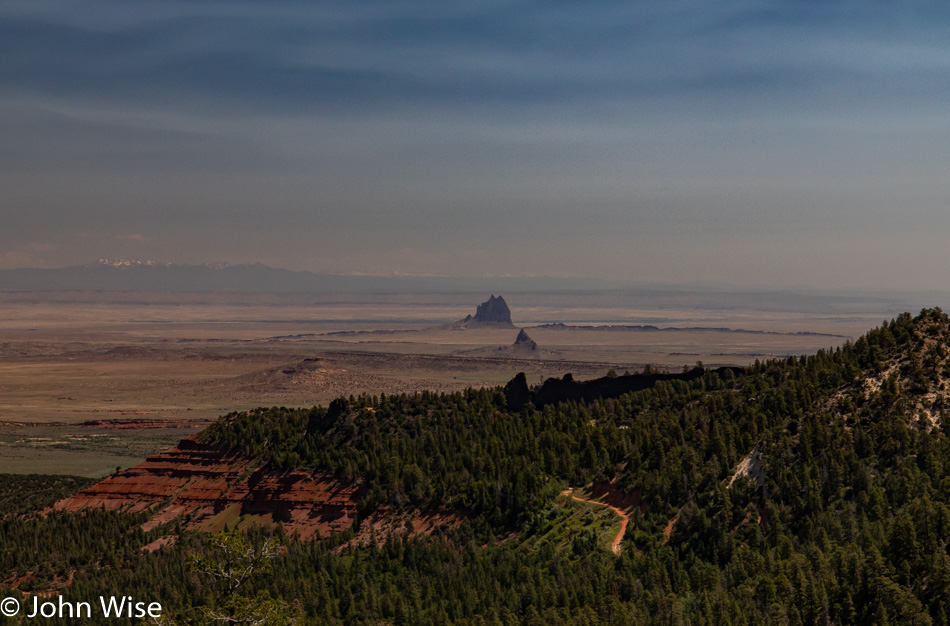
Our overview of Shiprock in the distance is from Buffalo Pass in Arizona at a height of about 9,400 feet (roughly 2900 meters) or nearly the same as the peak of the Zugspitze Mountains in southern Germany. By now, you might be wondering why I’m making all of these comparisons to places in Europe. It’s because our niece, being from Germany, can make quick references to places she’s more familiar with.
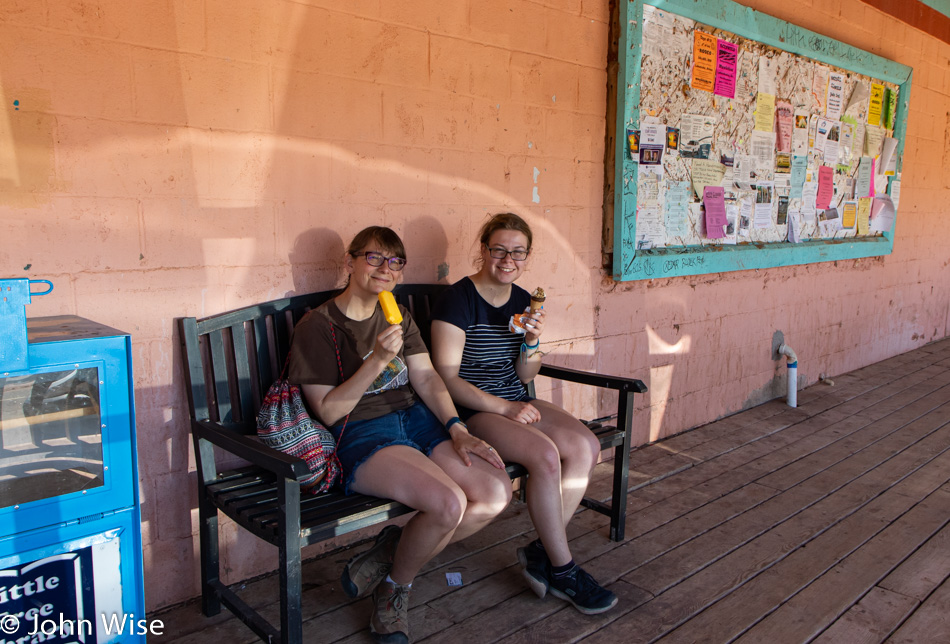
Time for an ice cream and cold drink pitstop at the Red Rock Trading Post in Red Valley, Arizona. We are very close to the New Mexico border at this time and are still on the Navajo Reservation where we’ve been all day so far. From this bench to Frankfurt, Germany, you’d have to travel 5,346 miles or 8,603 kilometers, and walking or driving wouldn’t be an option. Okay, I’ll stop with the comparisons that seem to be getting more ridiculous.
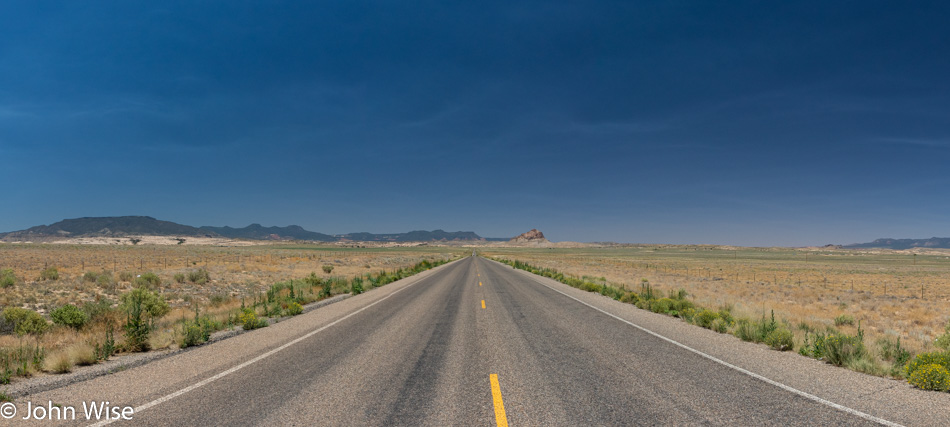
The road to Frankfurt 🙂
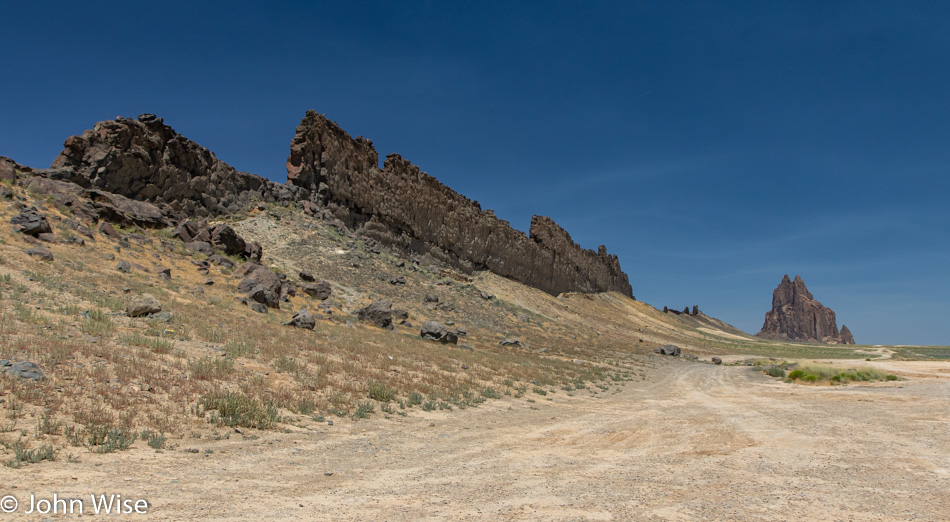
Shiprock in Navajo is known as Tsé Bitʼaʼí or “rock with wings.” The towering formation is the remains of a 27-million-year-old volcano and is also known as a monadnock. Back in the year 2000, Caroline, Jutta, and I stayed at Kokopelli’s Cave in Farmington, with a spectacular view of Shiprock.
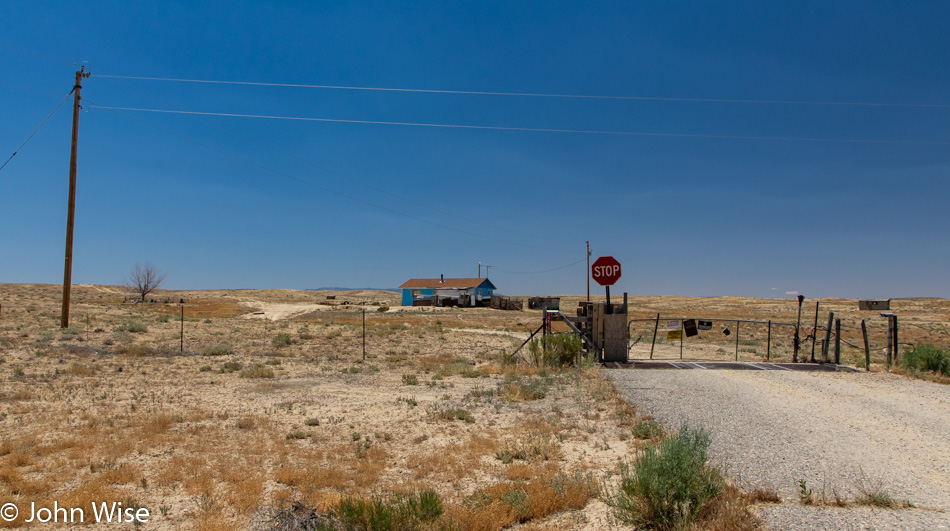
This is a house we cannot own because it is on Navajo land. Some may wonder why such a place with nearly nothing around it might be appealing. There is quiet out here most of us do not know. There is a darkness that allows people to see the night sky in ways many have never seen. You must listen to yourself and find peace in that if you are going to endure the perceived isolation. Television is not your friend on the reservation as it shows you a side of life that is nothing like your reality, but then again, those who watch television in big cities are seeing a parody of life that is not their own either. Nothing out here is convenient and readily accessible except wind and sunshine, so what you venture out to acquire had better be cherished. Native Americans knew this life and how to live it but had it robbed from them when they were taught they were simple and unsophisticated and should act more like their new masters. After 250 years of oppression, they lost some of their survival skills and didn’t exactly know where to look for them when there was nobody to mentor them in the ways of life that allowed them to be their own masters. So, if you see tragedy in this image, it is the work of all of us who don’t care enough to celebrate our Native American brothers and sisters.
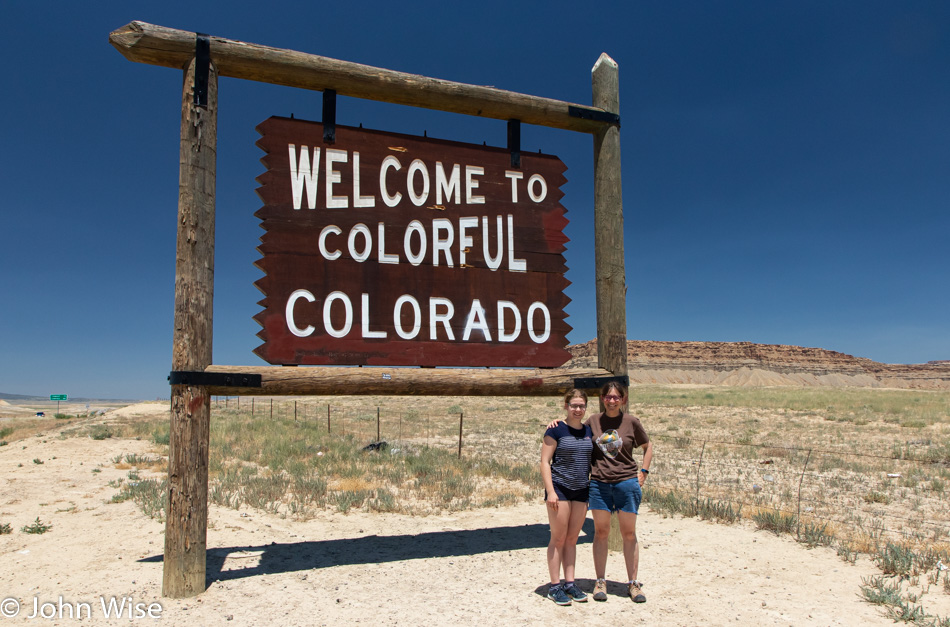
The road we took into New Mexico had a “Welcome to New Mexico” sign but from the bullet holes, stickers, and graffiti on it, we didn’t bother to stop for it. Here at the Colorado sign, we just had to get a photo of Kat entering the state for the first time in her life.
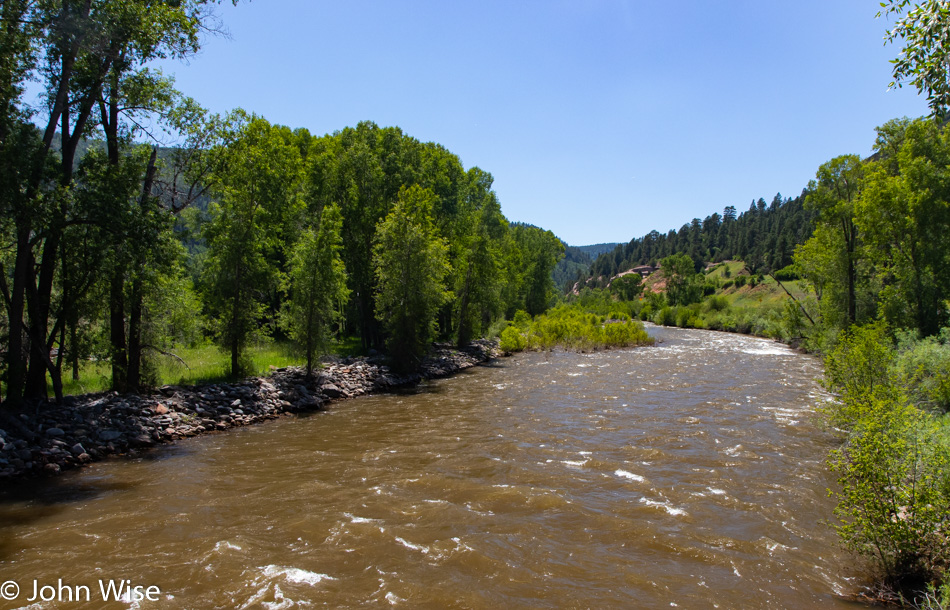
The landscape is starting to change dramatically as we continue our drive north.
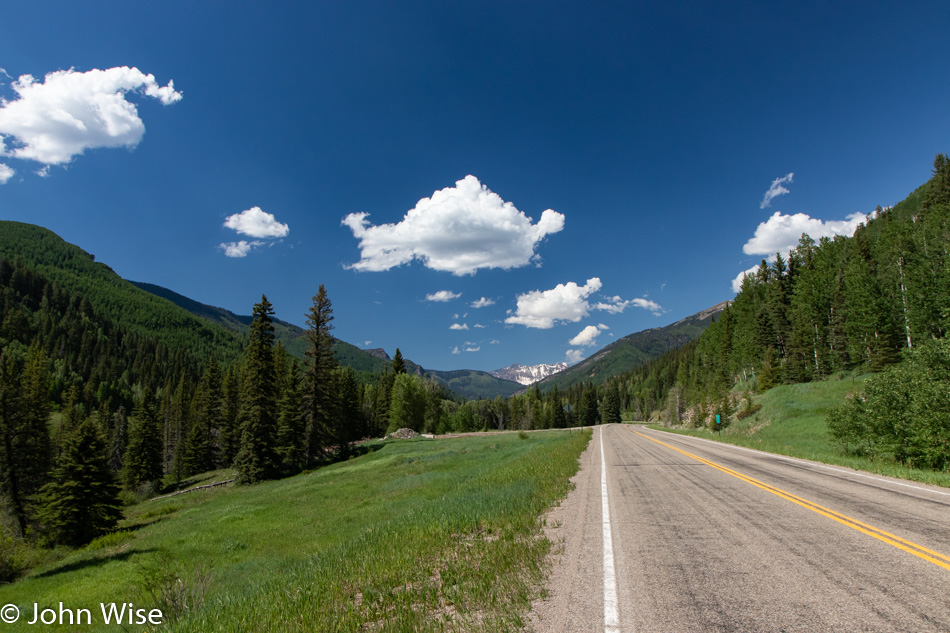
In the distance, we can see snow, while the lush environment around us is certainly a lot cooler than the lands we left not long ago.
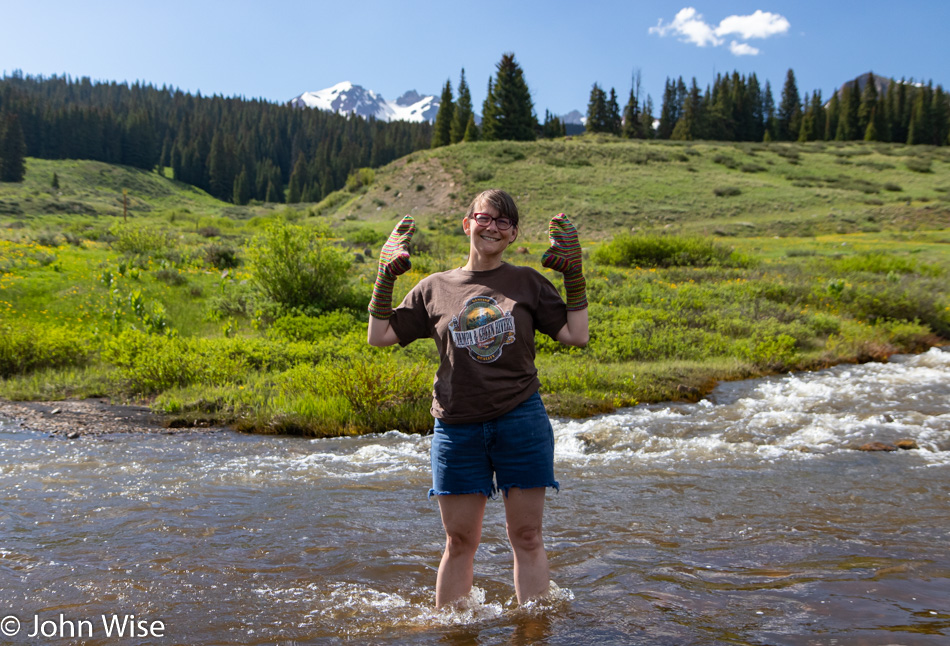
Stopping roadside for Caroline to step into a creek, but this time with a twist. She’s wearing these sock puppets to show off her latest creations that are soon to be sent to Croatia to our river guide Ivan, who, in addition to Petar, showed interest in a pair of handmade socks. So, in a sense, Ivan’s new socks have been “on the river” in Colorado before he’s able to wear them on a river somewhere in the Balkans.
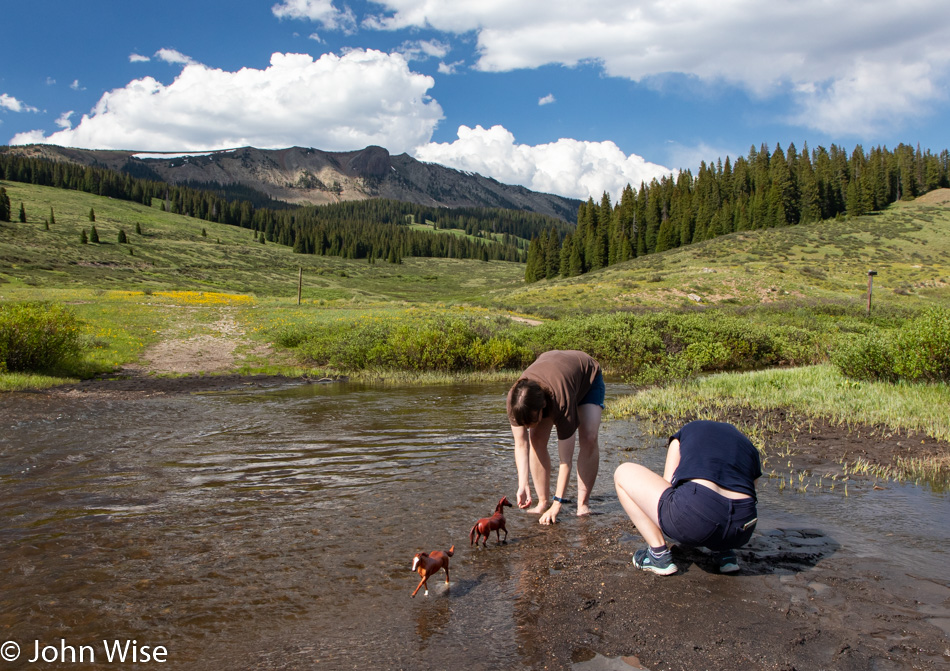
Now for the truth: Caroline wasn’t here just to model socks; she’s the assistant to Kat, the Photographer who is setting up a river shot with her horses, seeing we couldn’t find any willing live horses that would run through the water on command for her. Caroline is the splash wrangler who is being directed as to when and where to toss pebbles in the general direction of Phar Lap while Rags To Riches runs the other way, afraid of being hit with stones. Fortunately for us and our travels here in the southwest, Kat only has nine horses with her while the other 100 or so are back home (in their stable, I mean her bedroom), and yes, they are all named.
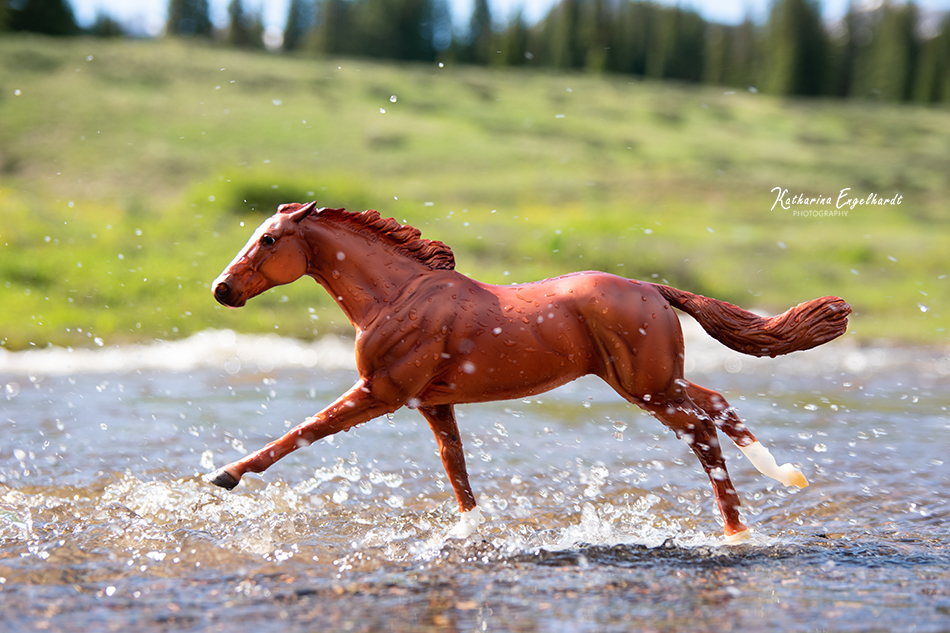
This is one of the photos that Katharina took that I think turned out spectacular. Of course, it was the expert splashing that Caroline added that made it just that much better.

The first week of July, the snow lingers on.
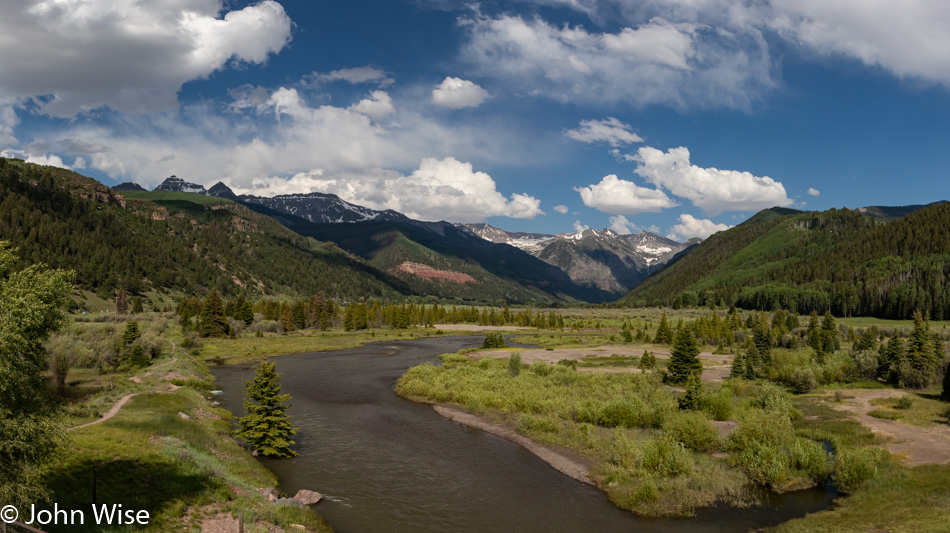
Slowly, we move into the mountains, and slowly, we get to know a little more about our niece.
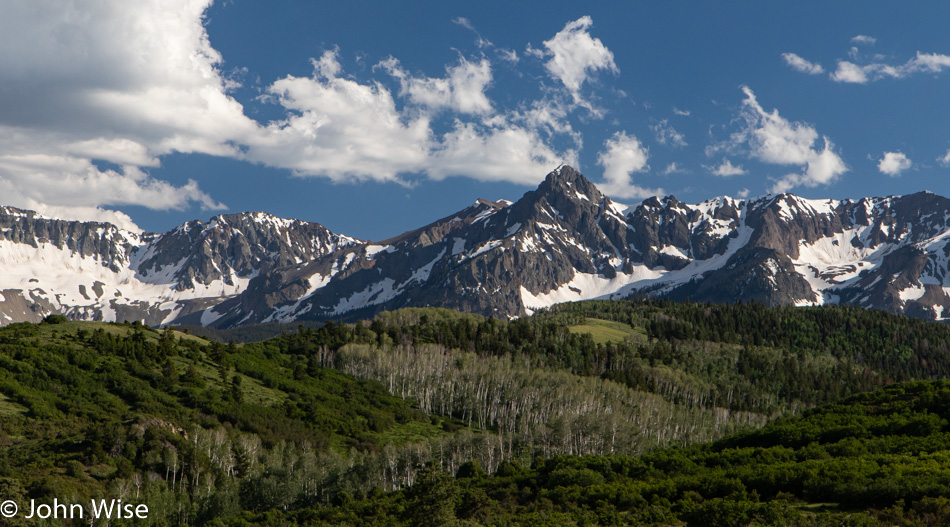
Couldn’t ask for more, as it’s just perfect up here. While I don’t have a lot to say about every photo, I had to include so many to act as reminders of how lucky we are as they stare at us into the future.
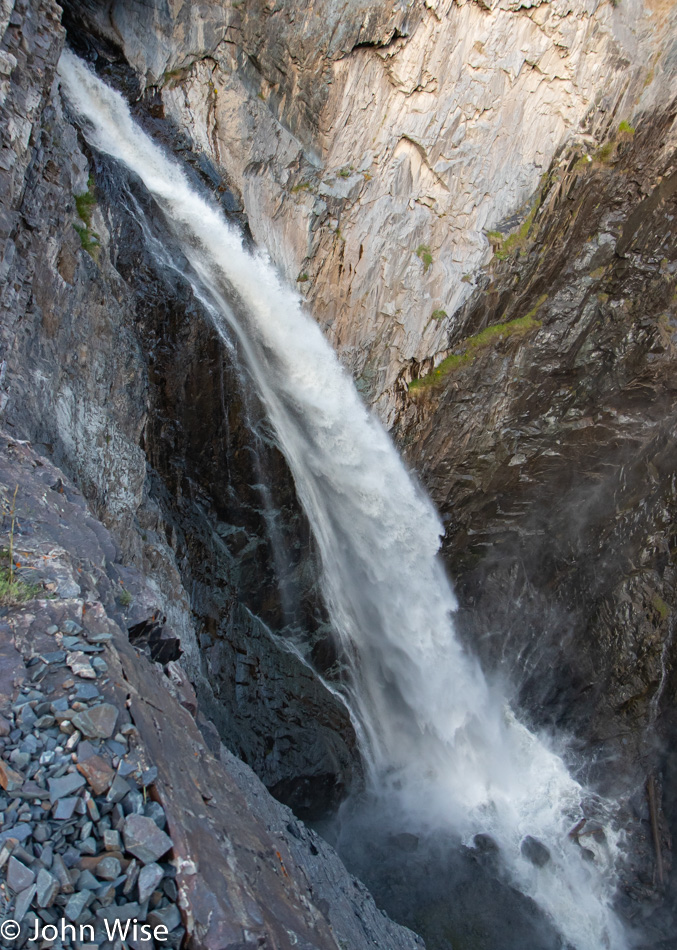
If you knew what I was standing on to get this shot, you might be surprised. I was terrified by the metal grate built well over the cliff jutting into open space where looking down allows you to see river and rocks, so it might as well be glass that I’m standing on. I got my photo and quickly left the platform before my vertigo fully loosened my center of gravity if you know what I mean.
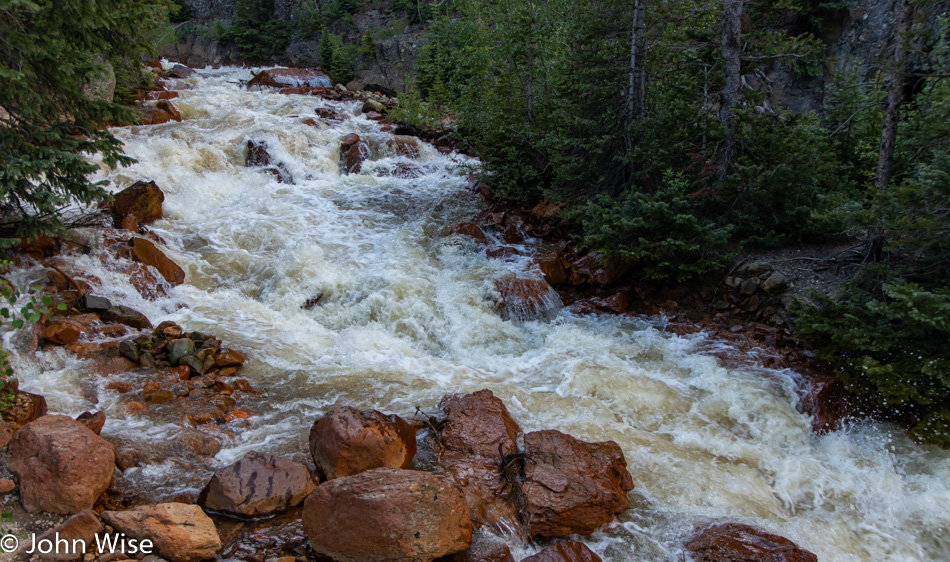
The Uncompahgre River raging down the mountain roars as it passes by.
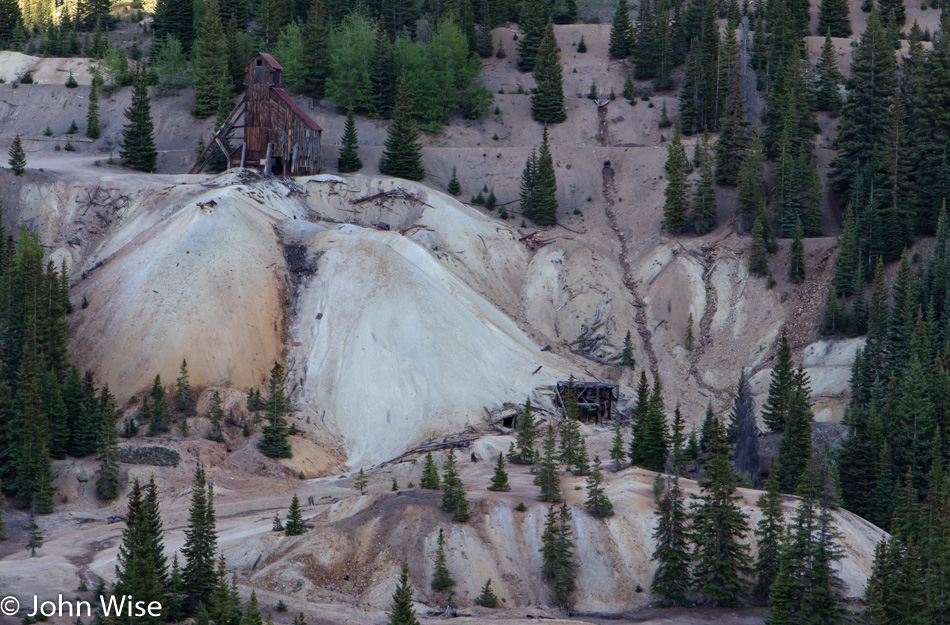
We’re not far from Silverton, and all along this stretch of the Million Dollar Highway are signs of Colorado’s mining past.
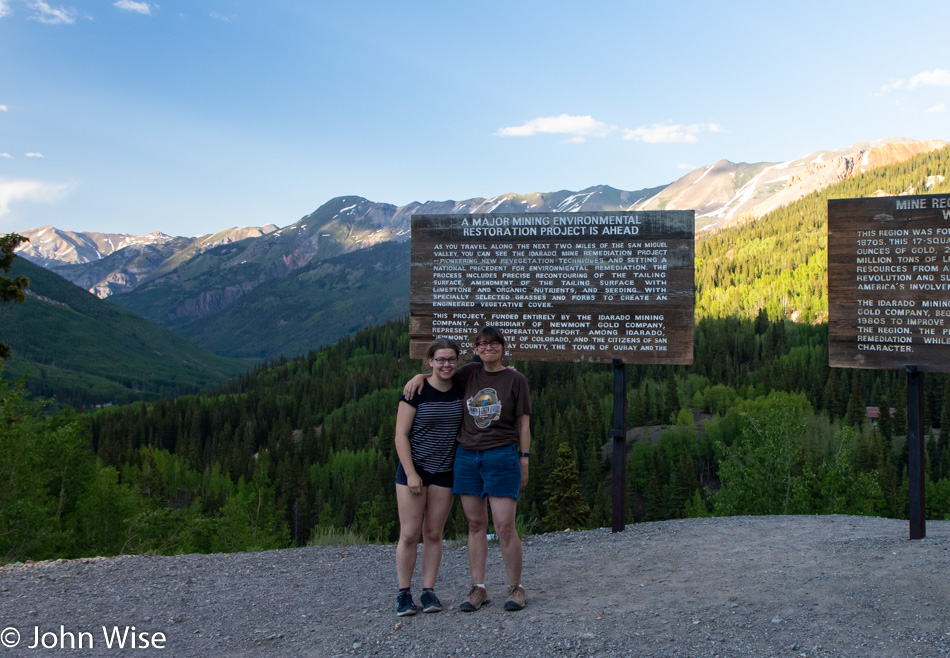
Trying to get to know a 19-year-old is never easy, and a somewhat quiet one makes for other challenges, but here we are, spending 24 hours a day together trying to make it happen. Maybe this is more awkward for us because we don’t have any practice with how to communicate with a teenager, though we’d like to think that there’s a part of both Caroline and me that is still in touch with our inner-teen. Then we meet a real teen and realize that we’re actually some pretty seriously old people.
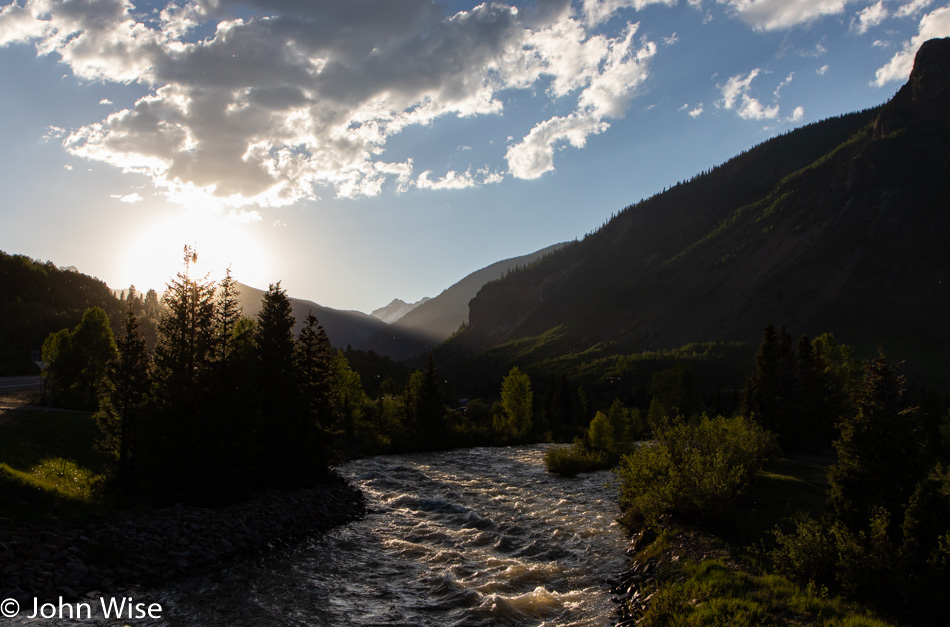
After this spectacular sunset, the last leg of our drive into Durango, Colorado, was under the approaching cover of darkness. Dinner was at the Himalayan Kitchen, where Kat had the best meal of the three of us with her choice of Matar Paneer. Once in our hotel room, I don’t think we were awake for more than about 10 minutes.
Overall, I think the day was successful, with a wide variety of sites for our niece to take in and likely overwhelm her senses. Over time, I hope she’ll learn how to share her impressions and offer us some feedback in her own words on what the journey into the lands of Native Americans meant to her.
